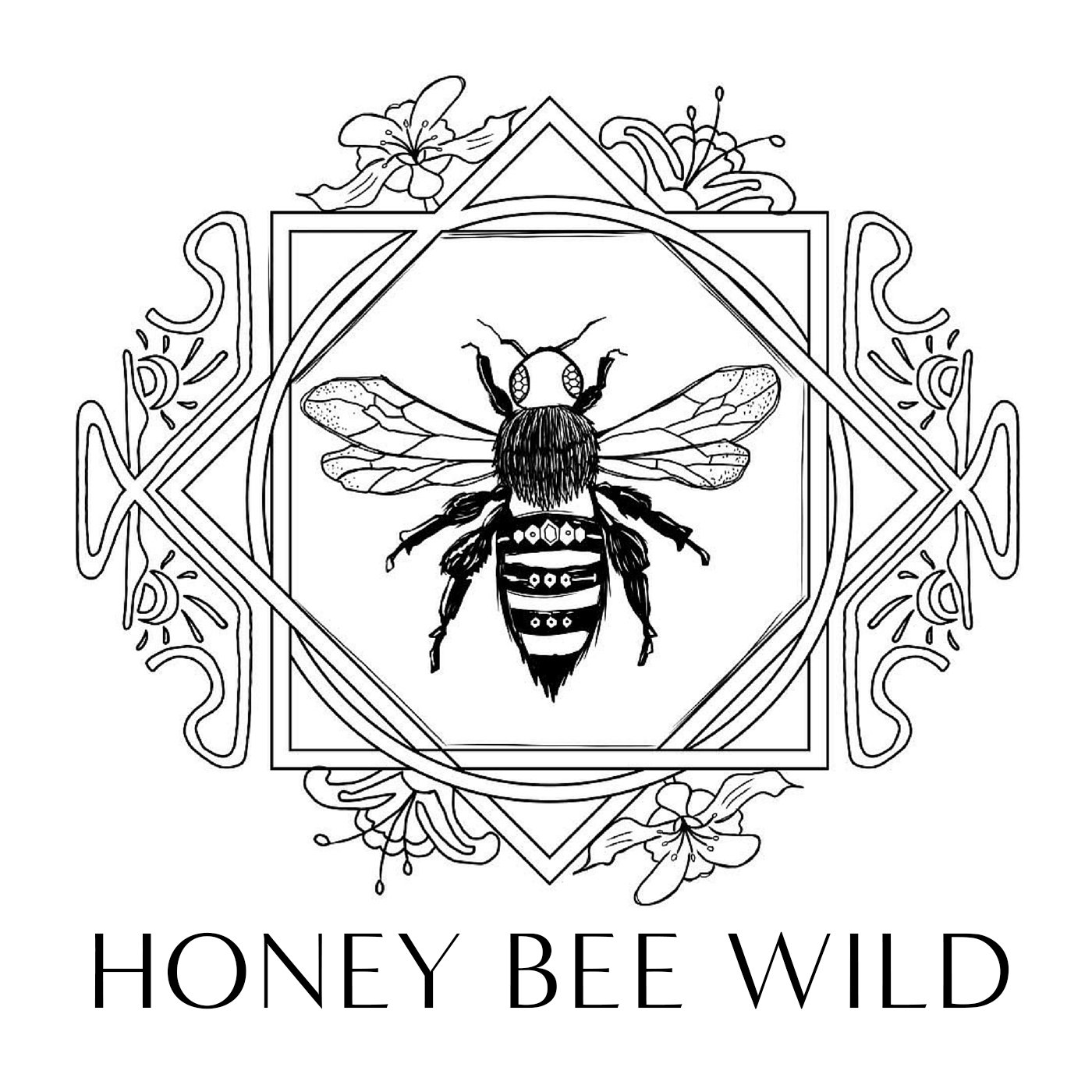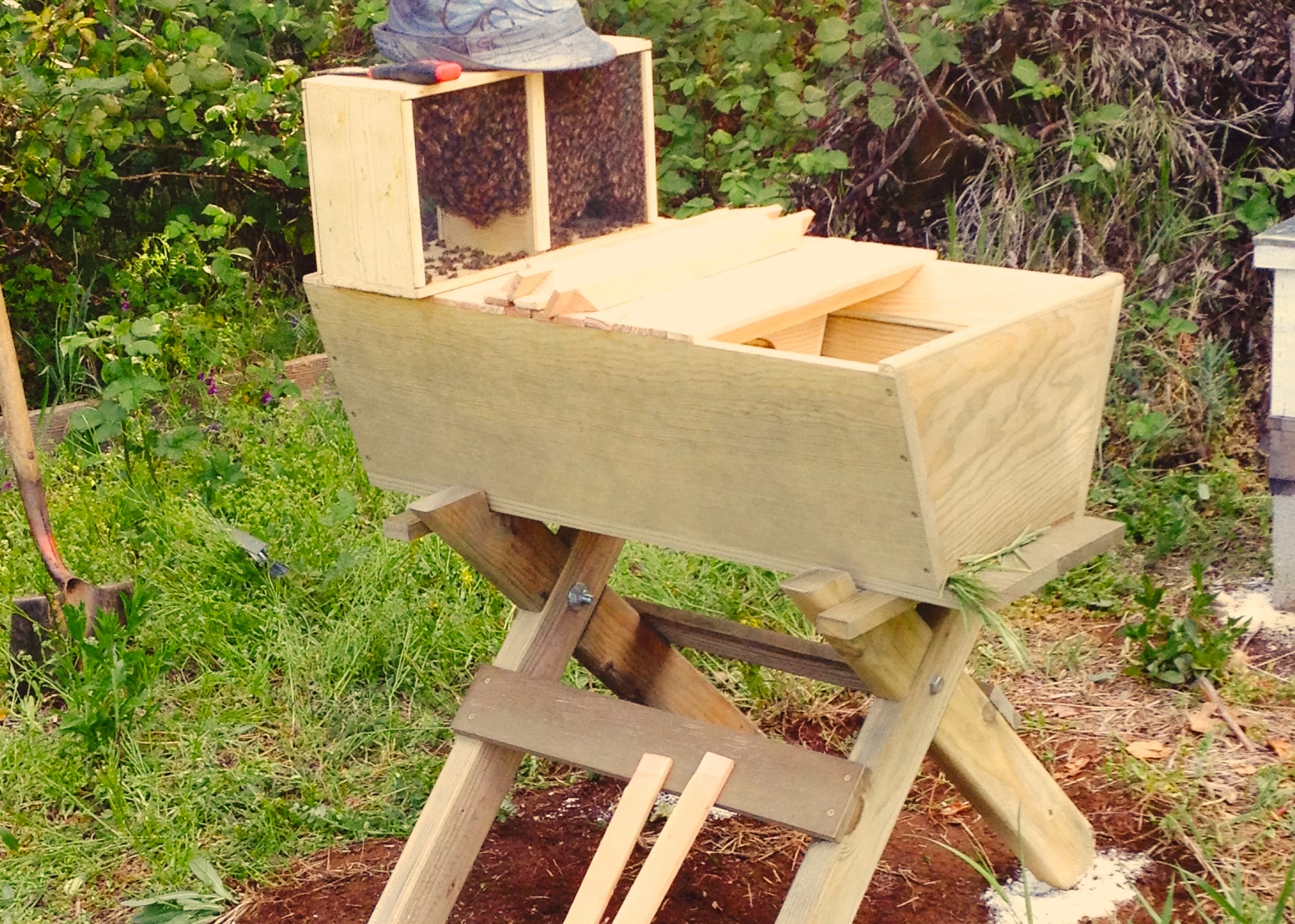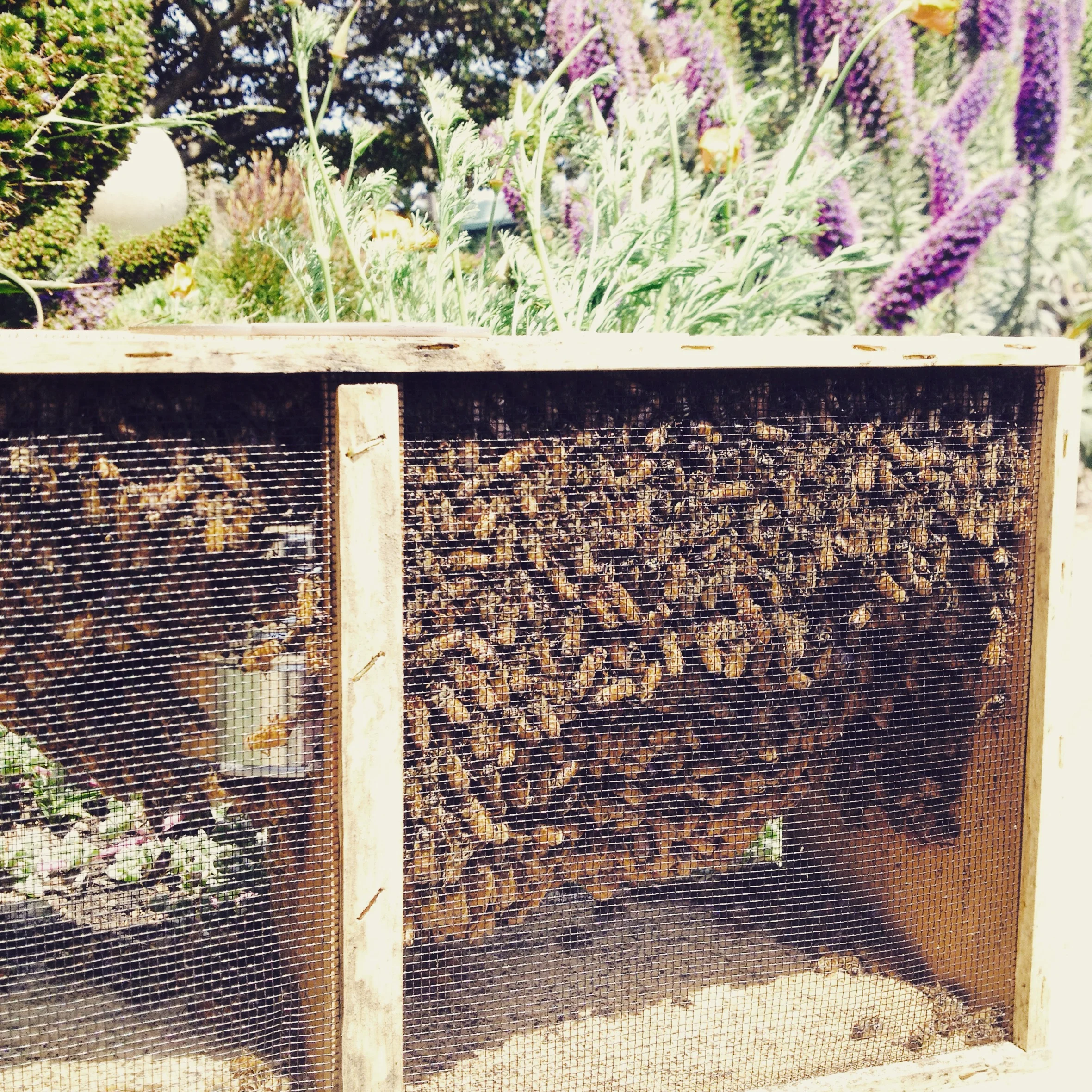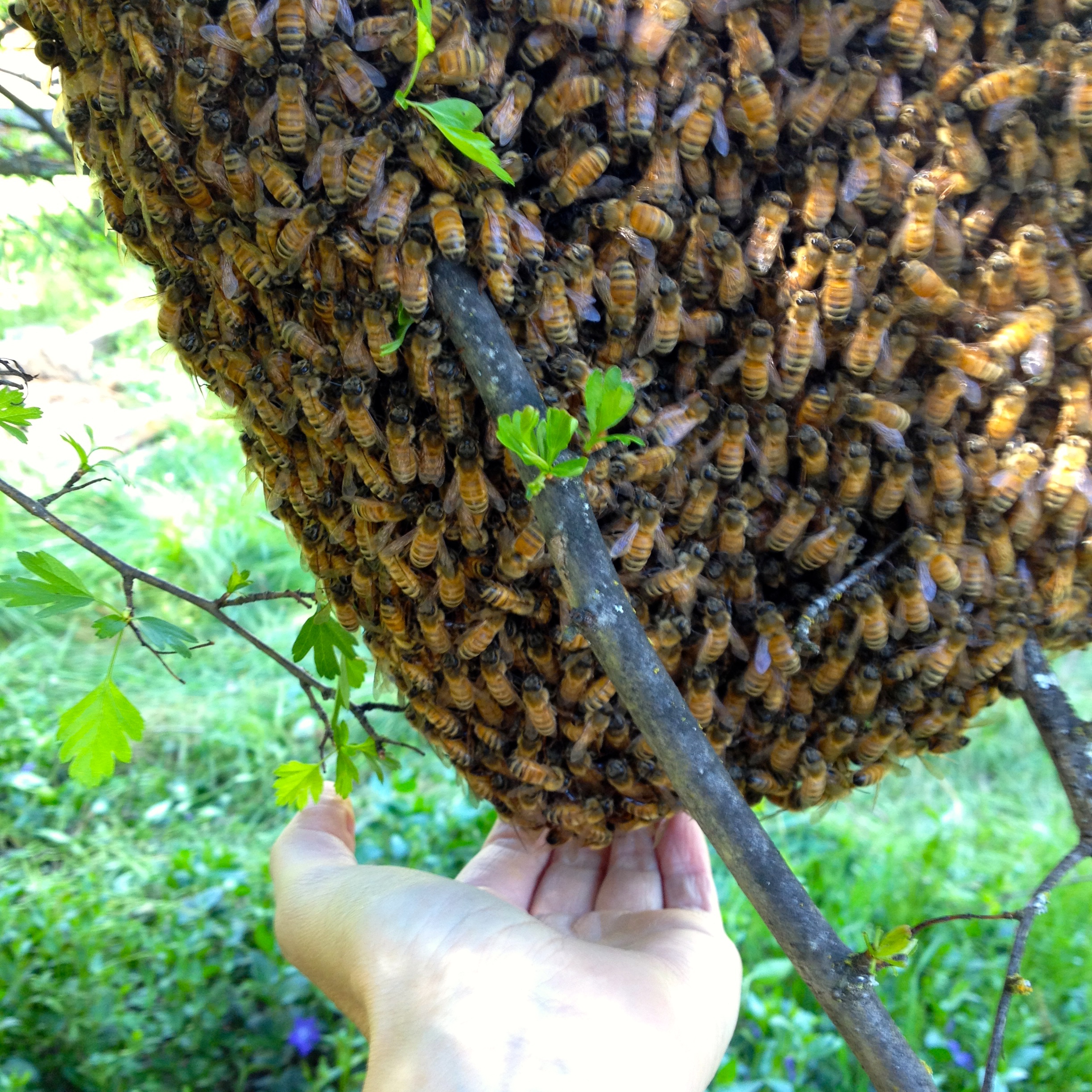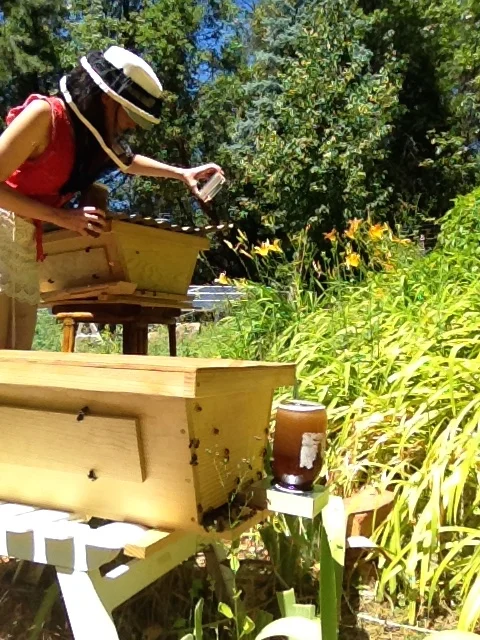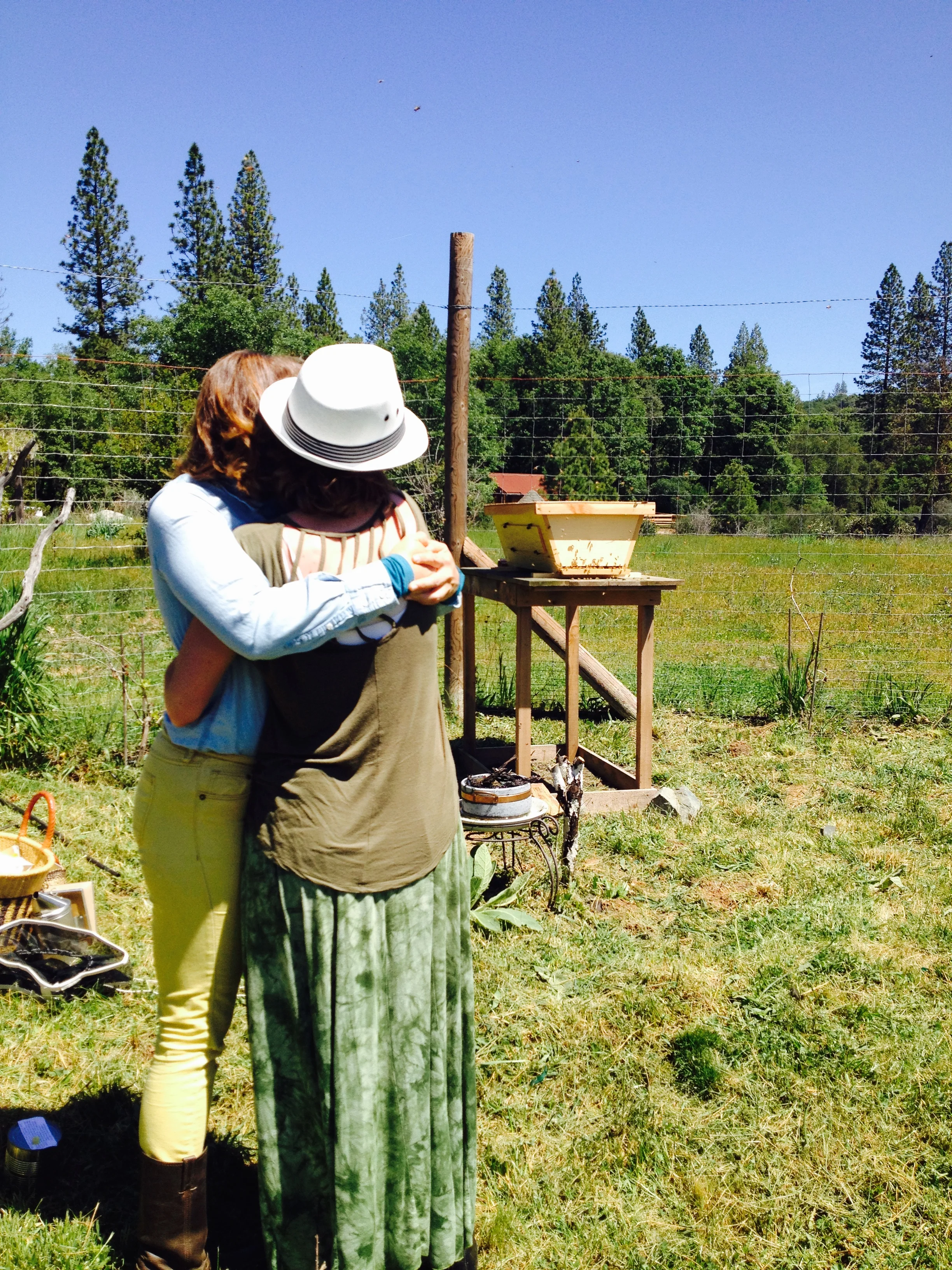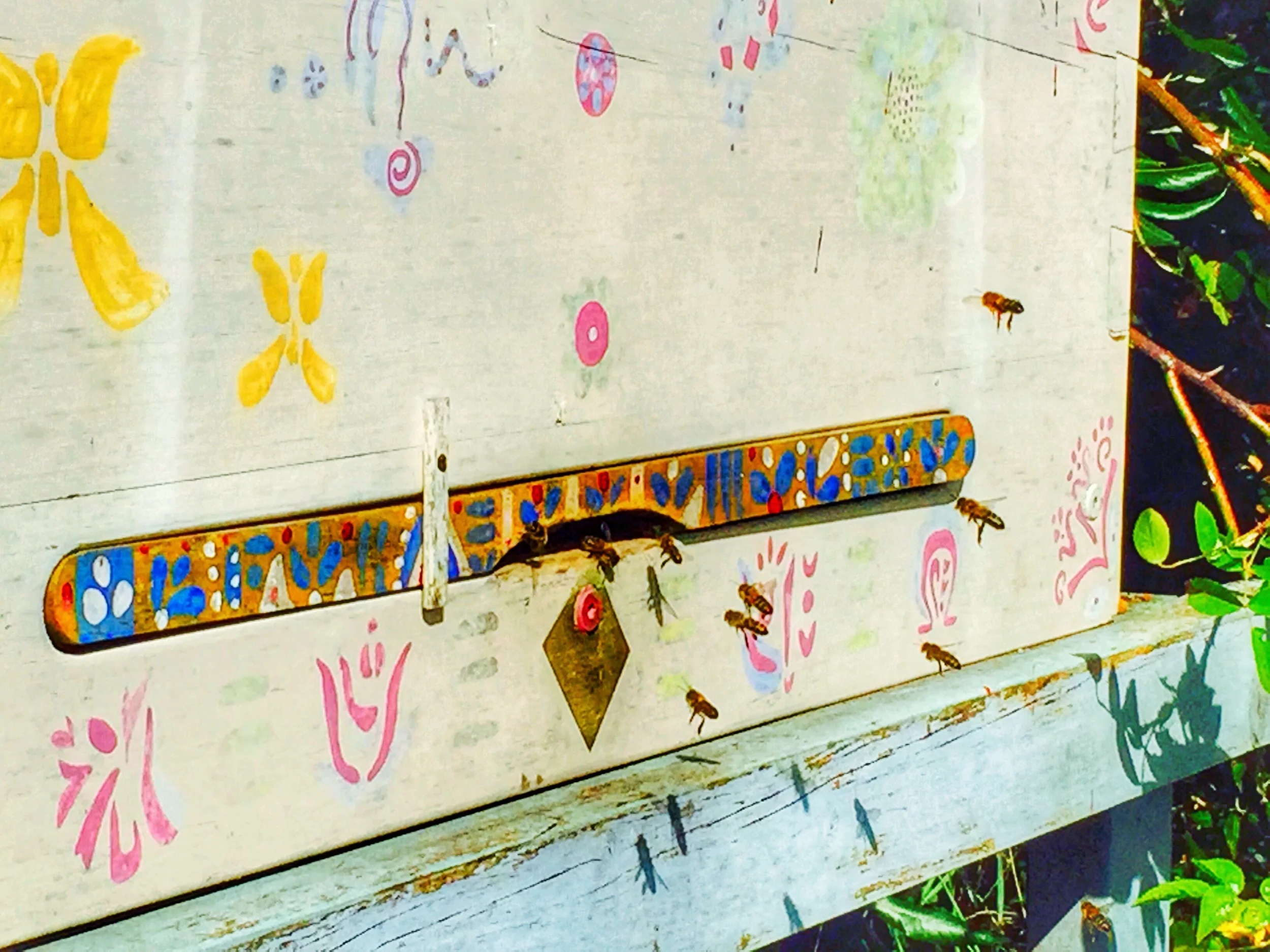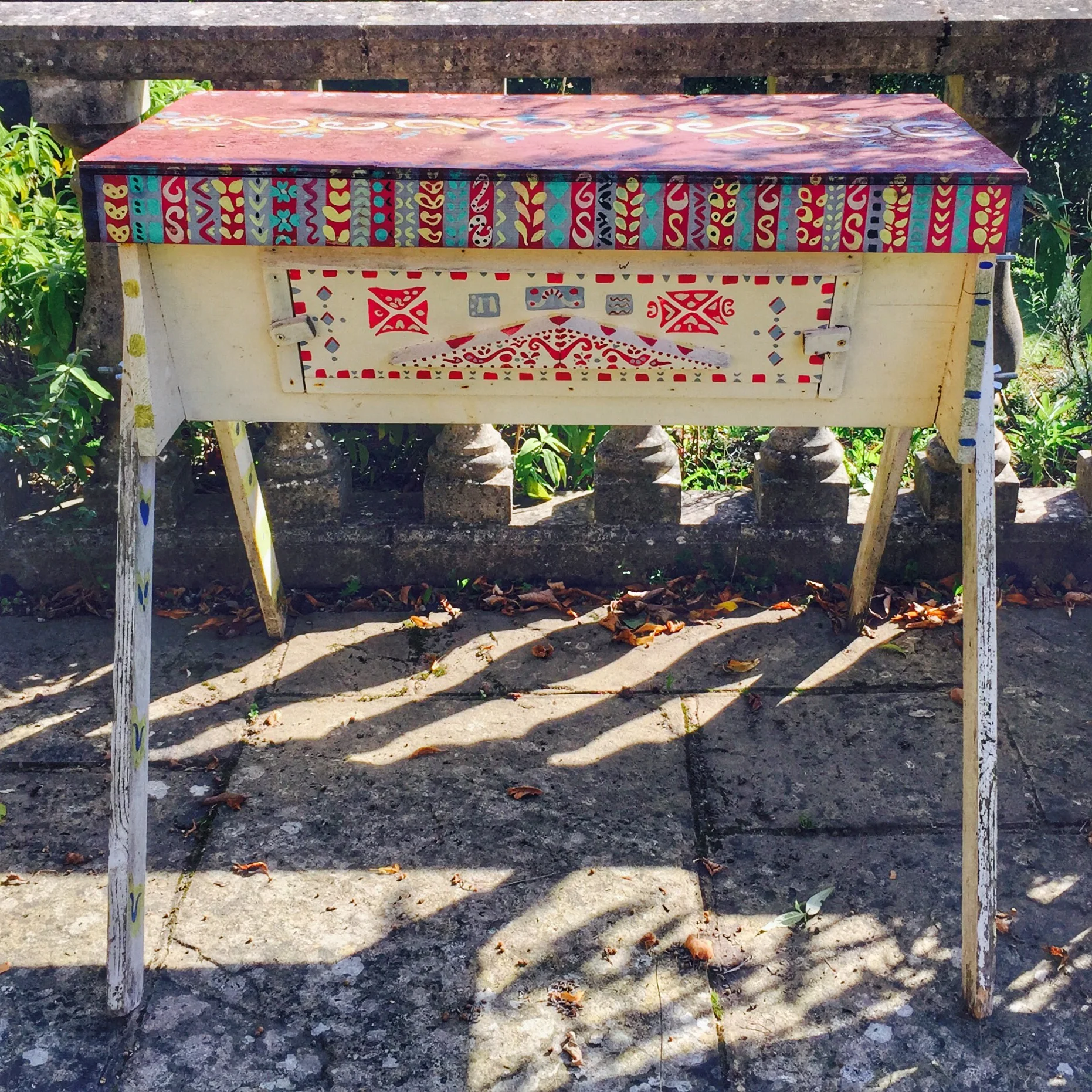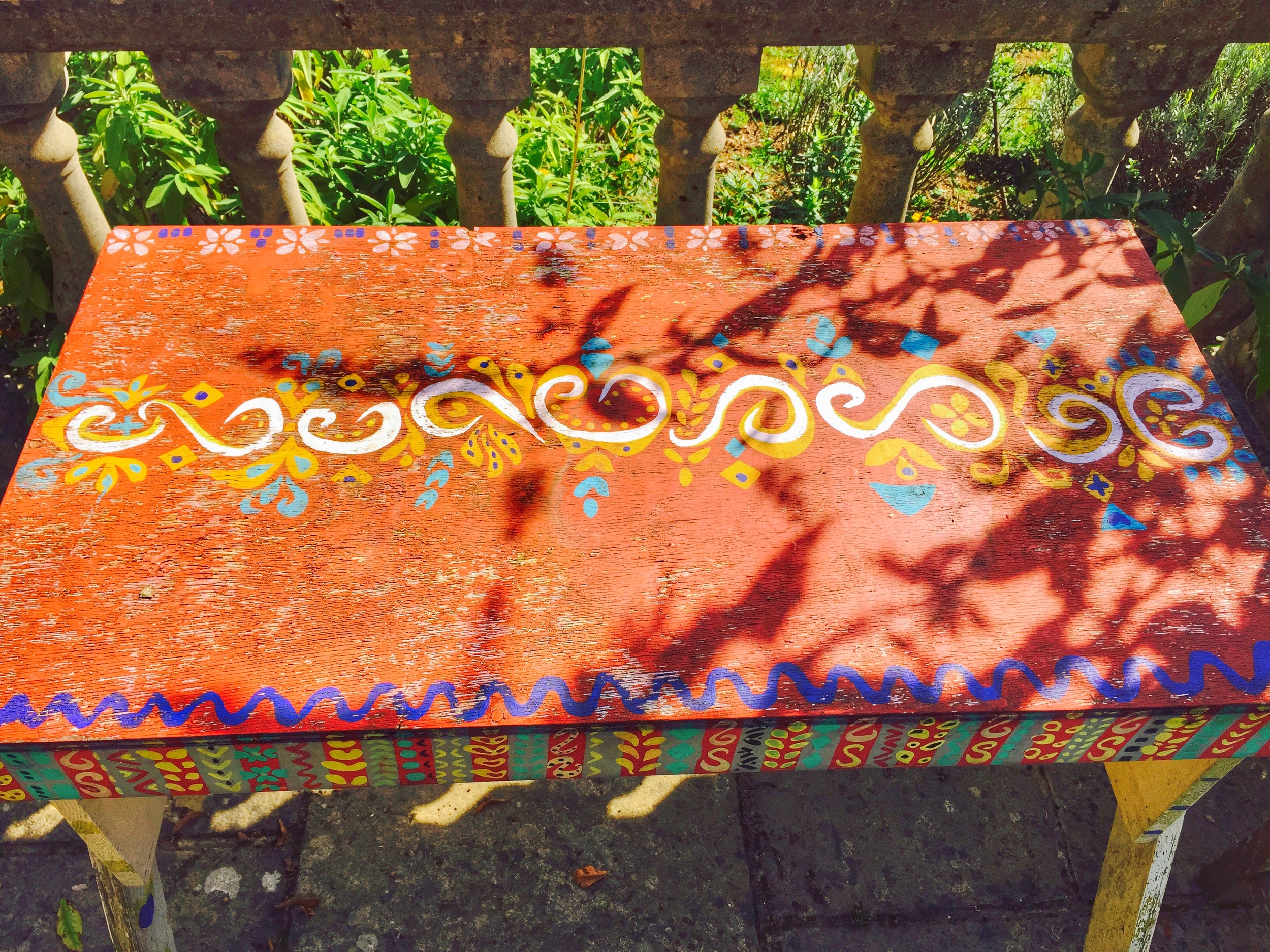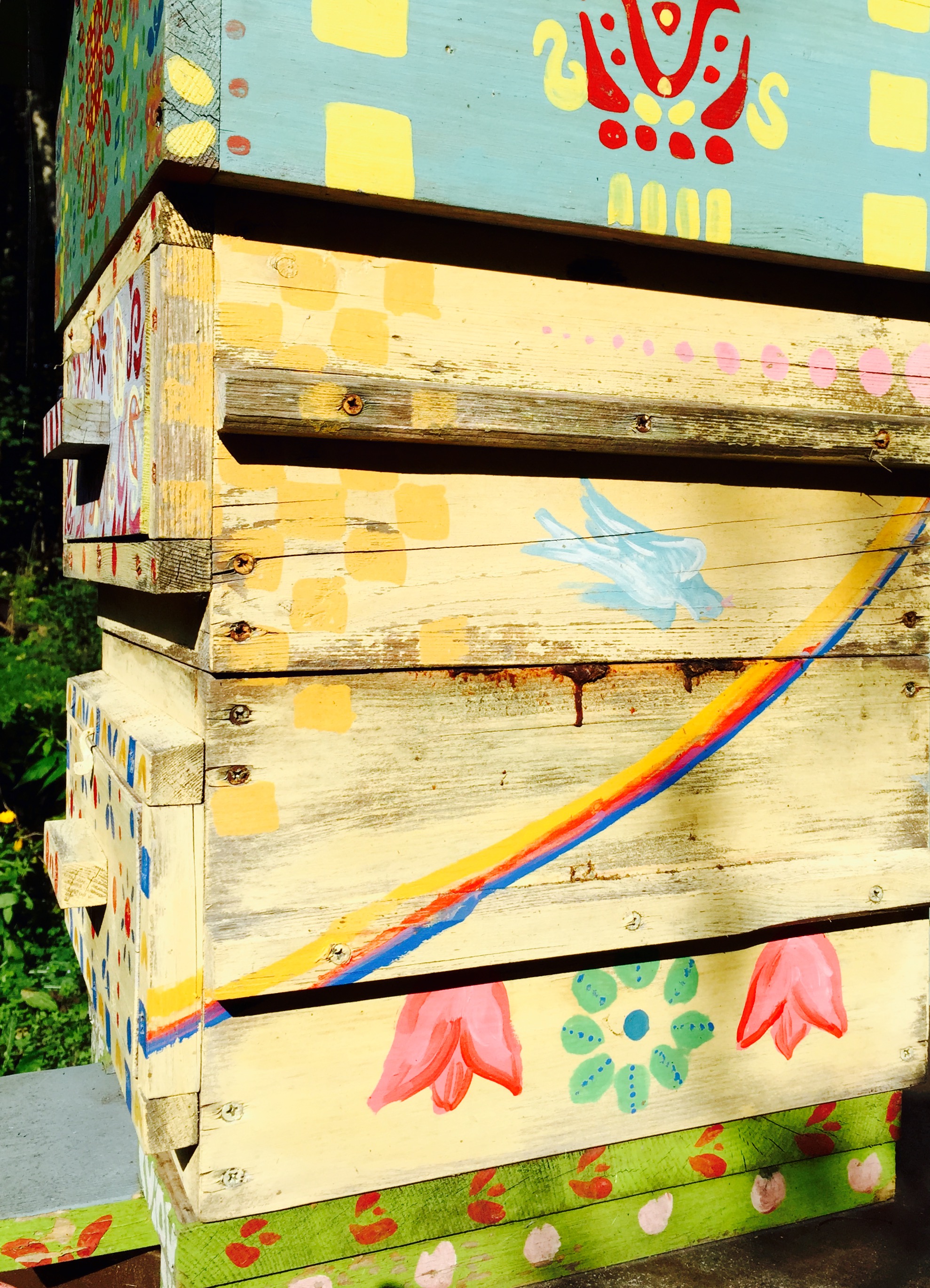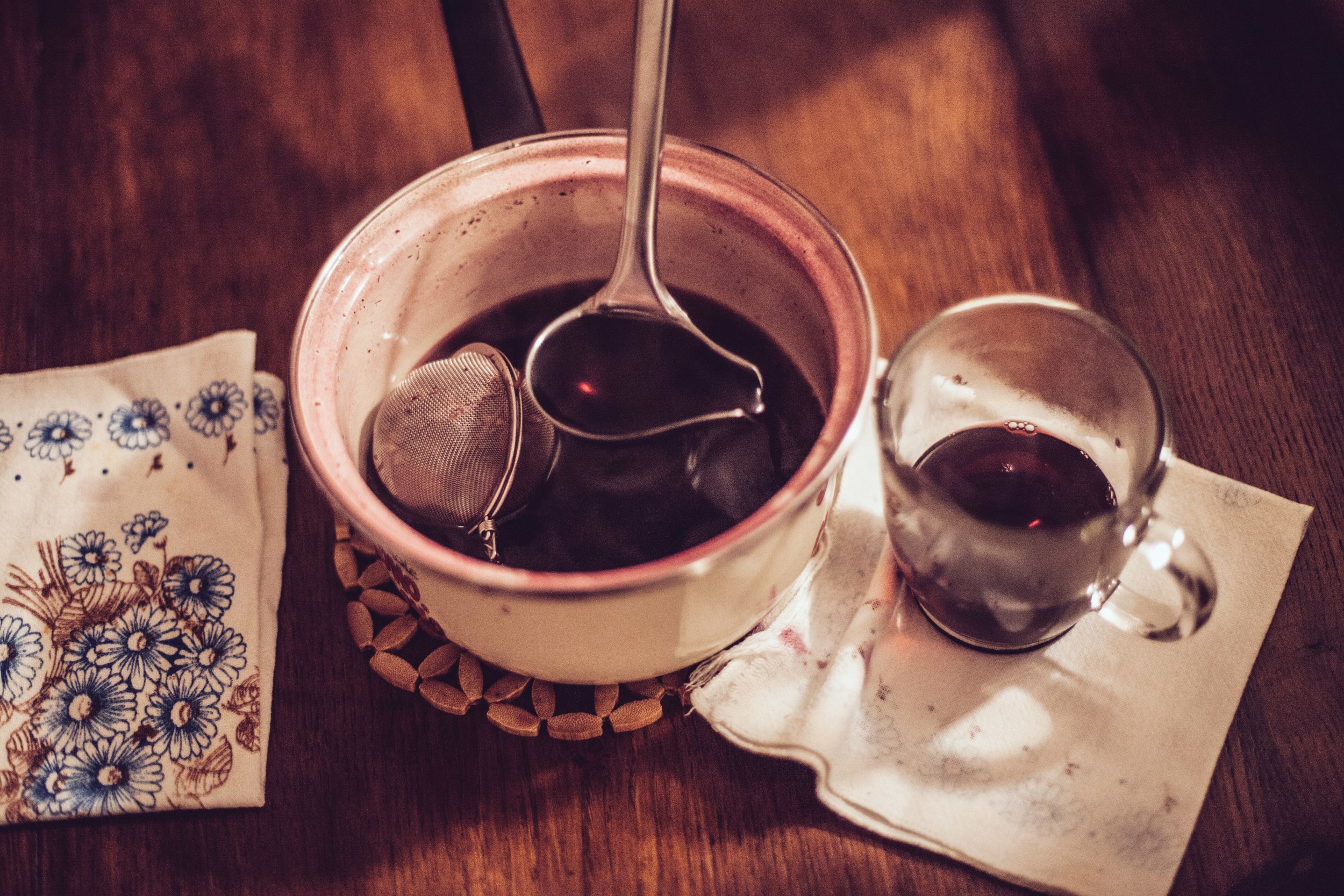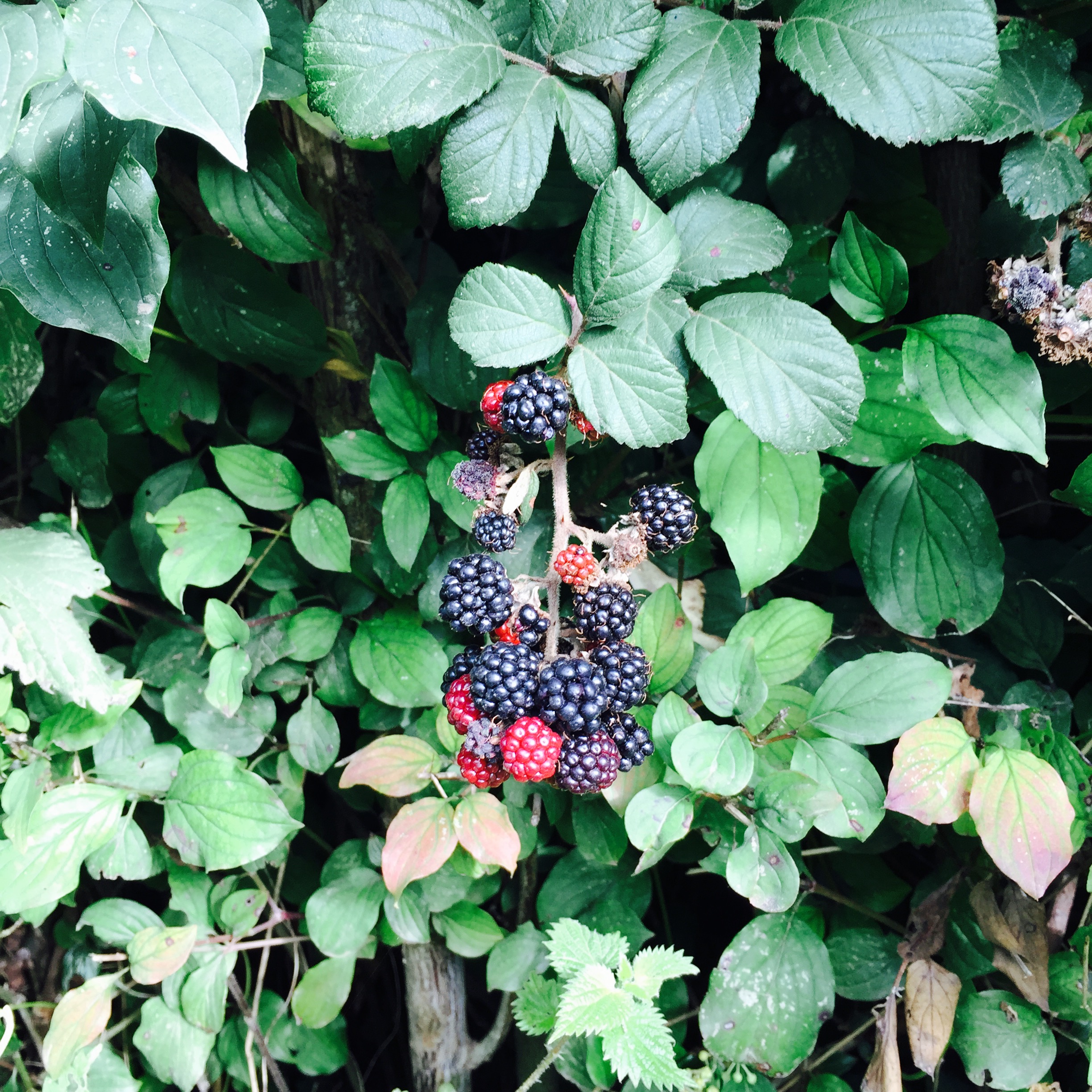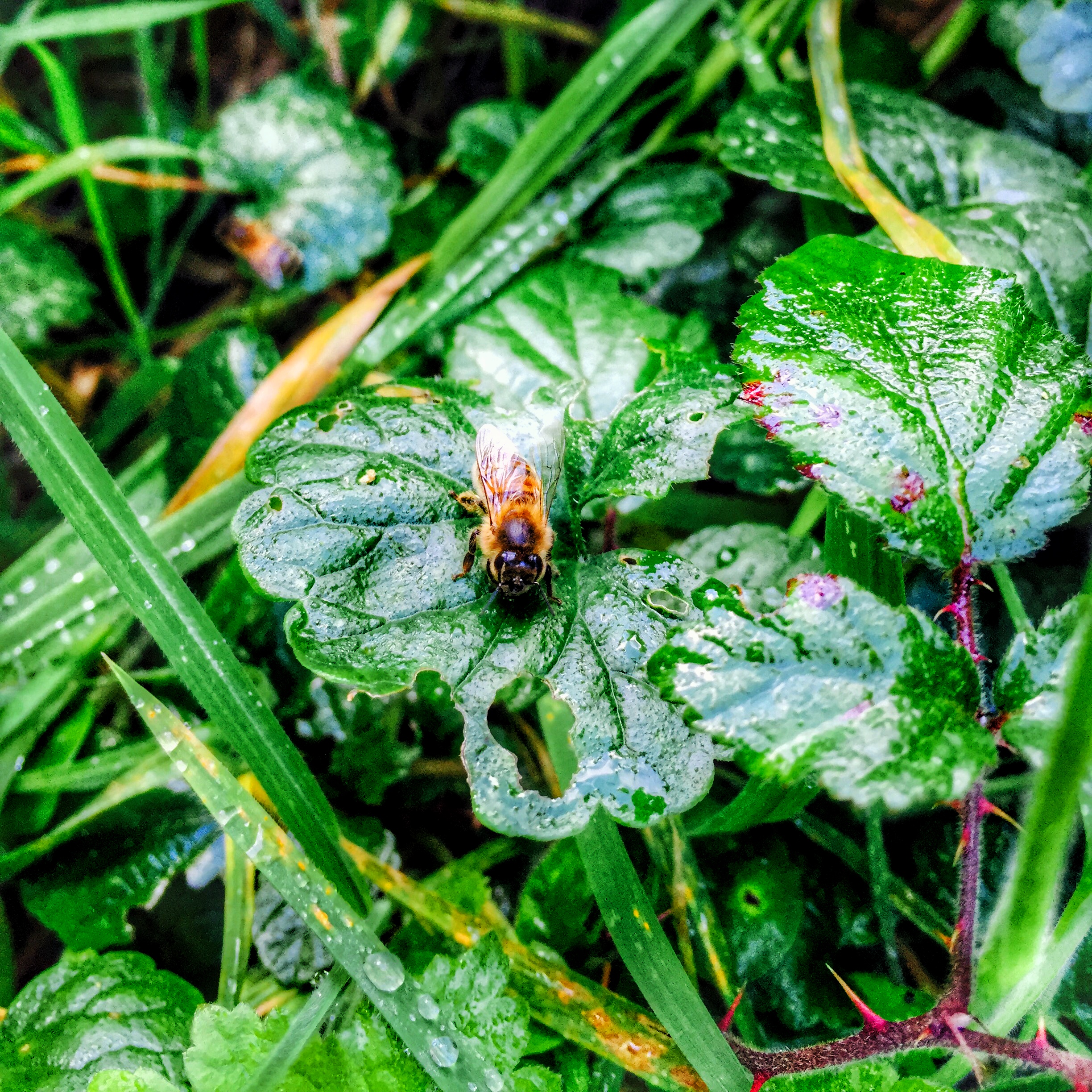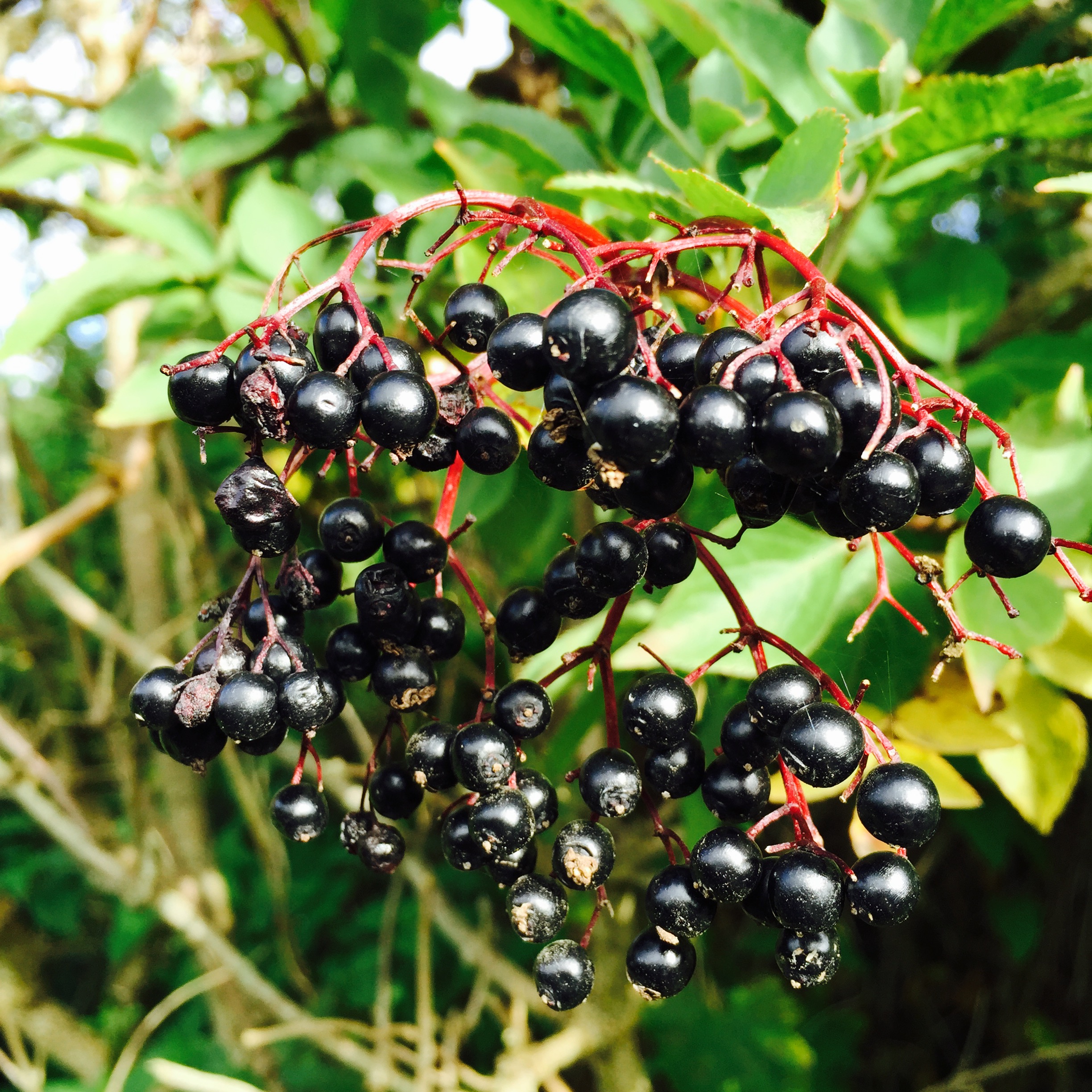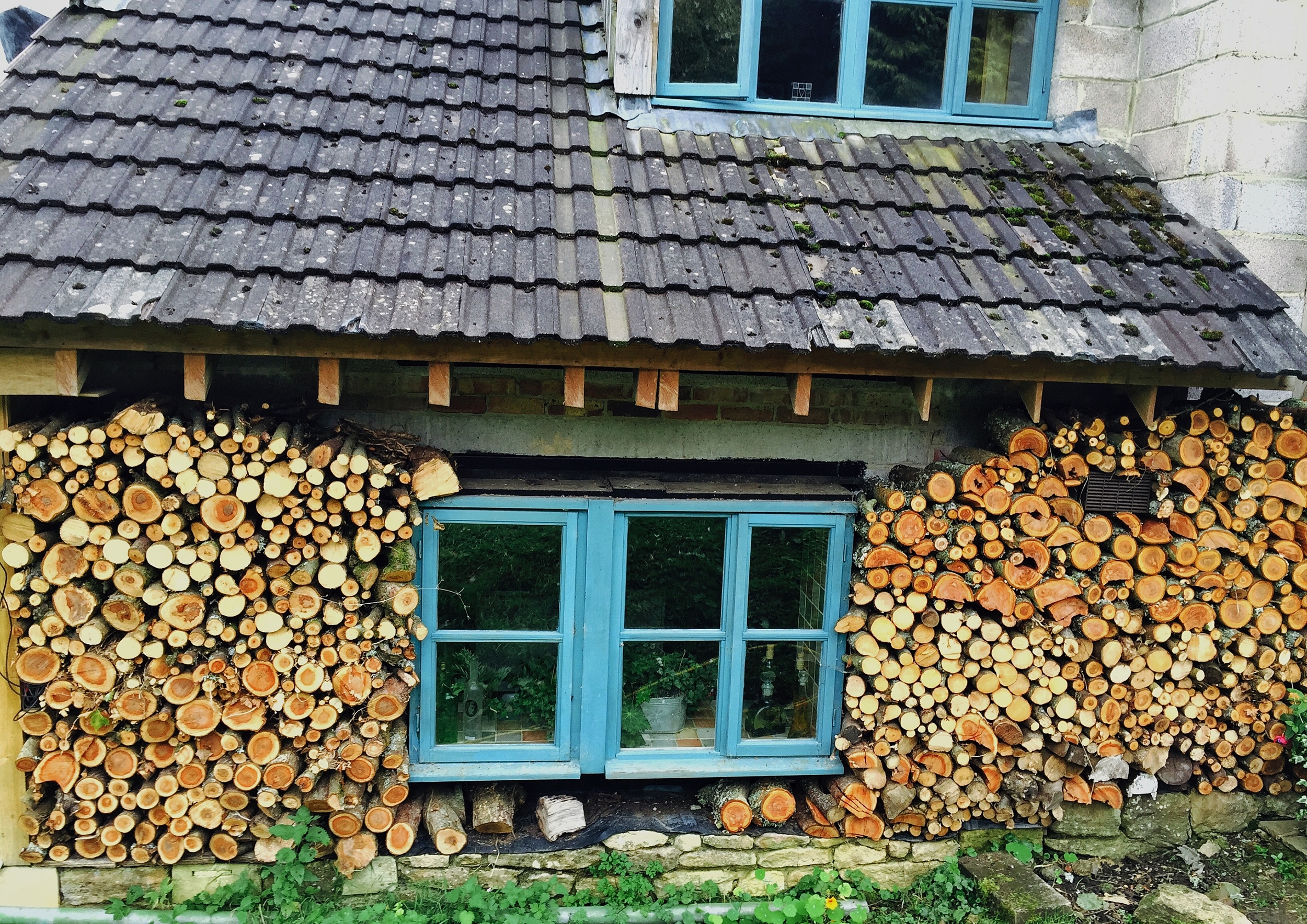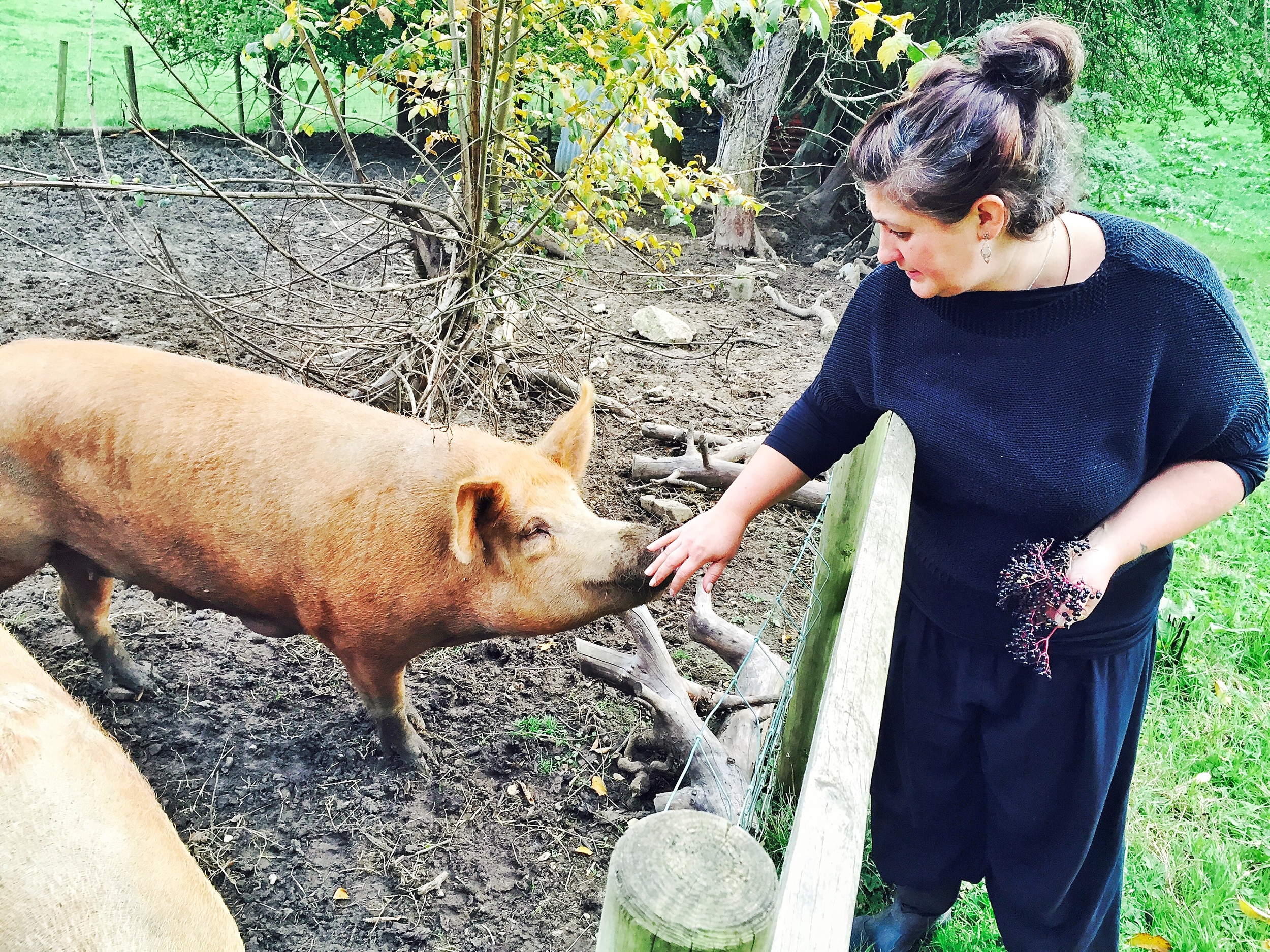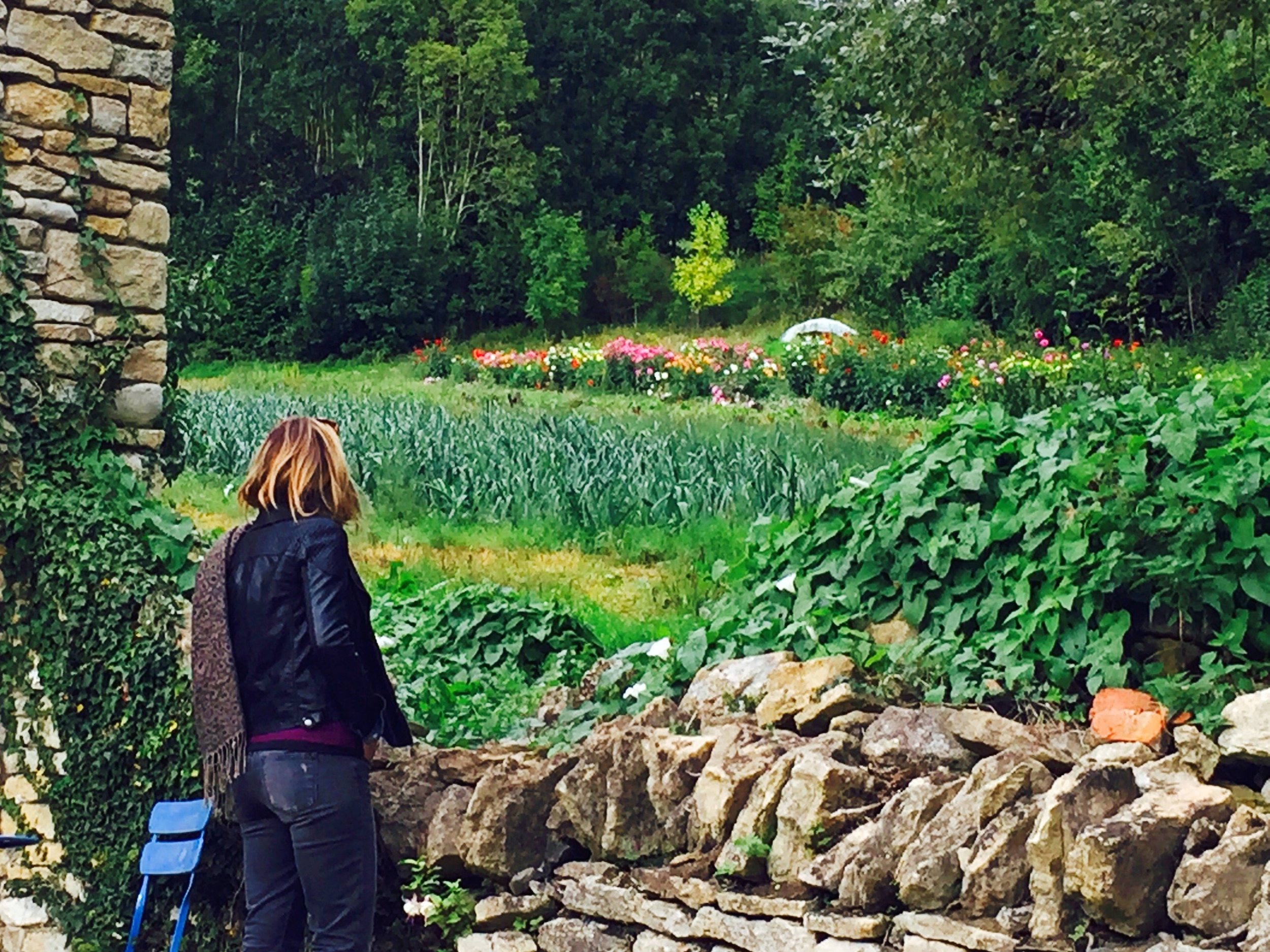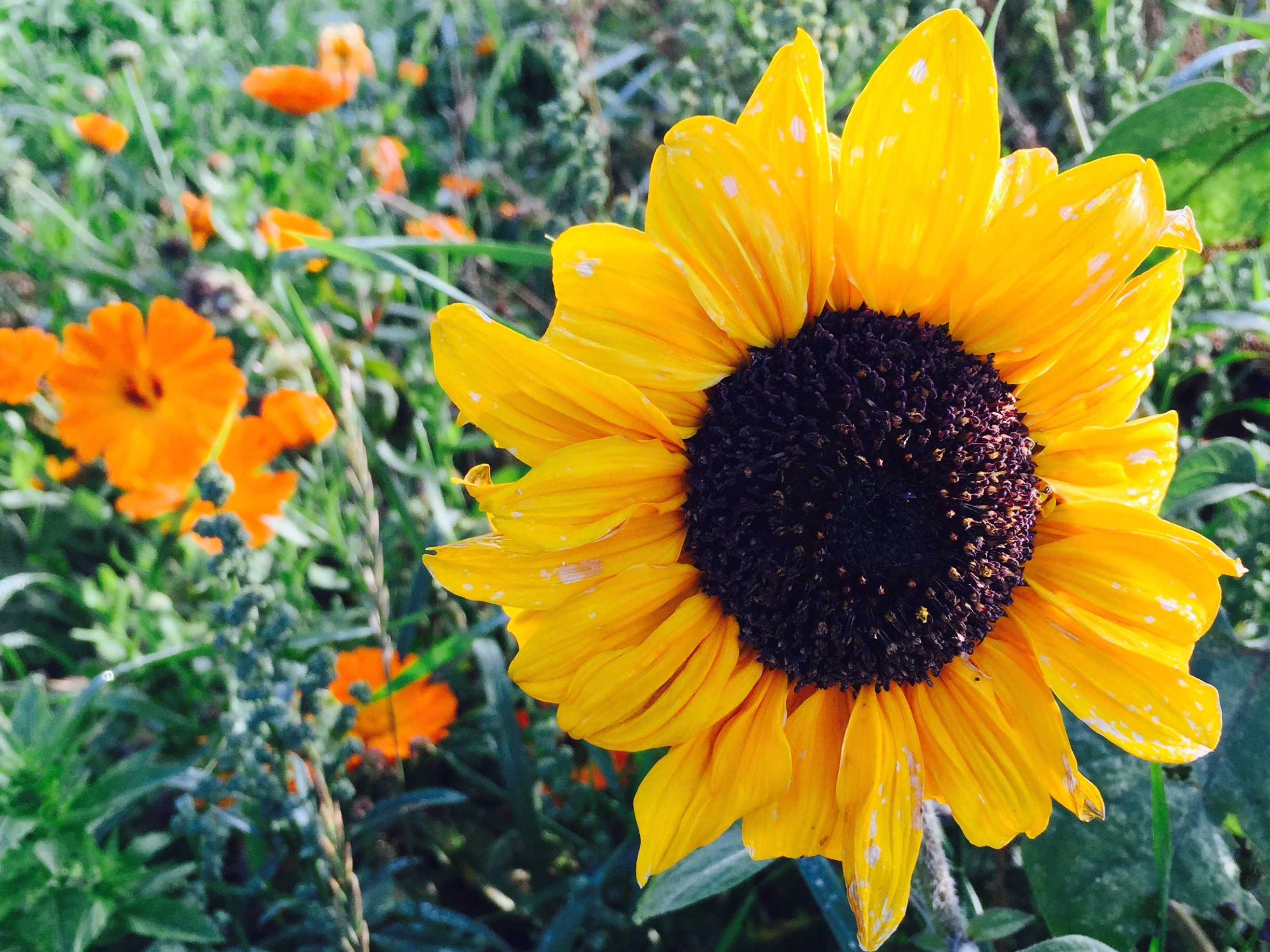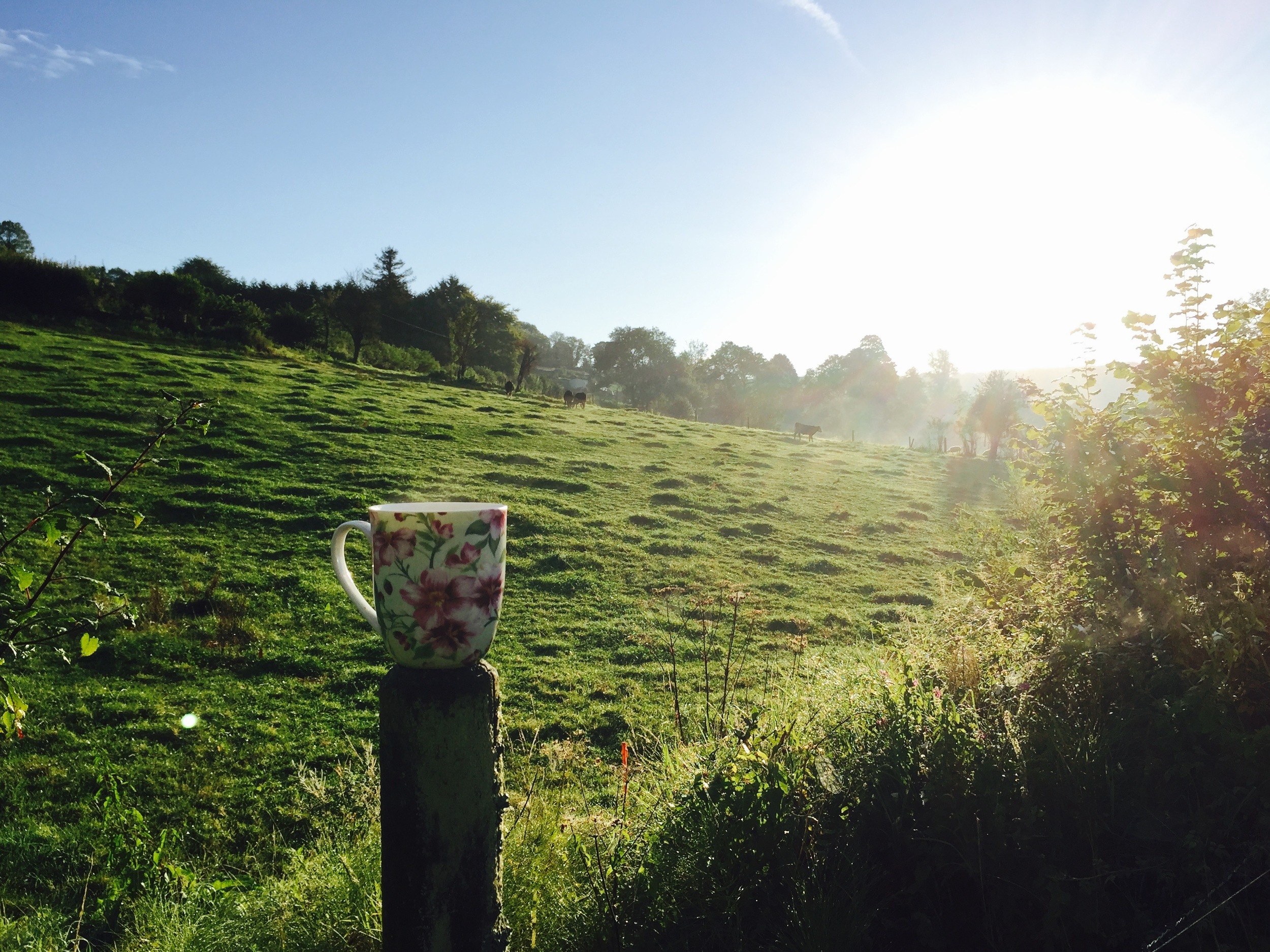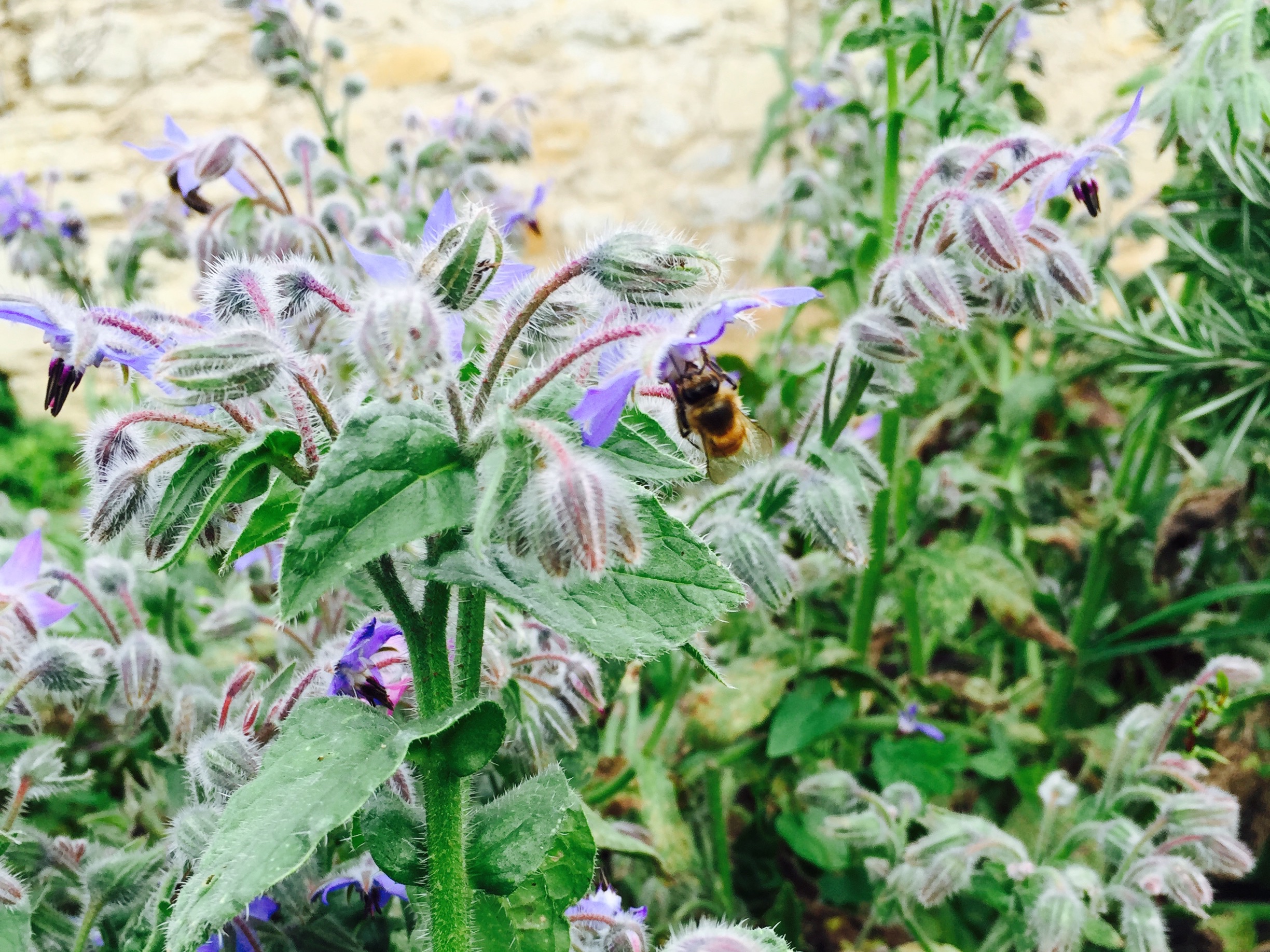How to Get New Bees
In Northern California there is still snow in the hills and rain on the weather forecast. However, despite the winter chill, it’s time to start thinking about getting bees. Regardless of where you live, late winter is the time most local bee breeders start selling bee packages and nuc. You wont receive your bees until the spring, but if you want to ensure you’re going to get bees this season, it’s best to buy them now.
In Northern California there is still snow in the hills and rain on the weather forecast. However, despite the winter chill, it’s time to start thinking about getting bees. Regardless of where you live, late winter is the time most local bee breeders start selling bee packages and nuc. You wont receive your bees until the spring, but if you want to ensure you’re going to get bees this season, it’s best to buy them now.
This year was a particularly devastating year for colony losses across the board. Both chemically treated and untreated colonies suffered. In California, the severe drought helped to encourage monstrous mite populations. Couple this with low nectar yield, even in the height of spring flow, and you have a recipe for starvation, disease and death. Due to the losses many beekeepers are needing to purchase bees this year. Add the ever increasing interest in backyard beekeeping, and there will most definitely be a shortage in supply. The take home message is: buy your bees now, plant as much pollinator-friendly plants as possible, and get serious about preparation for the new season.
Important factors to consider when buying bees
Untreated bees
If you interested in Natural Beekeeping and chemical-free hives, it is best to try and source your bees from breeders who do not chemically treat their bees, organic or otherwise. Most commercial bees are treated for varroa mites and will be less likely to have long-term survival with the transition to natural methods.
While treatment is the preferred method for most beekeepers, among natural beekeepers, there are strong arguments against biochemical treatment, citing a decline in the immune system of the honey bee as a primary negative side effect. If you want to learn more visit the Natural Beekeeping Trust.
As local as possible
Like any animal, honey bee colonies adapt to their bioregion. Bees that were raised in a warmer climate, such as the California Central Valley will have a harder time adjusting to cooler climates or harsh winters. That being said, I have had much success raising bees in the Sierra Foothills of California at 2,500 feet from packages of untreated bees sourced in Sonoma county, a warmer, coastal region much closer to sea level. Heartier races of bees such as Russians can also have more success moving to colder (or hotter) climates.
Do I need to select a specific race?
Most packages and nucs will be of a certain breed unless they have been cultivated from feral colonies (my favorite choice!). Breeding for strong genetics is one of the most interesting areas of research regarding health and survival of the species. For those who do not want to chemically treat their bees with miticides and antibiotics, breeding for strong genetics is the way to go.
There are a number of different bee stocks that have been bread for different qualities such as mild temperament, heartiness and productivity. Michael Bush has a great list of bee races here.
When purchasing bees, it is important to find out as much as possible about the bees you’re obtaining, including the race. Some beekeepers offer a choice between stocks. Italians for instance, are mild-tempered bees that thrive in Medditerean climates. Russians tend to be stronger and better for wintering over in cooler climates.
You can start with a specific breed, but remember that if the bees replace their old queen with a new one for any variety of reasons the new queen will openly mate with drones of various genetics and you will no longer have a hive of a singular race.
Four Ways to Obtain Bees
Package
A package is generally made up of 3-5 pounds of bees (about 10,000 bees) that have been shaken from hives into a small ventilated cage and supplied with feed. Most packages come with a queen in a small cage inside the package. Some bee suppliers (particularly those that ship by mail) sell the queen separately. Packages are best hived within the first 4 days after being shook unless conditions do not allow for it. The sooner the bees get into their hive, the more likely they are to survive.
It is important to understand that a package of bees is not a colony yet. They have no allegiance to their queen and they are often made up of unrelated bees.
Pros:
The easiest and most common way to attain bees.
Can be shipped from anywhere in the country (not always the best thing).
The most common way to buy bees for Top Bar and Warré hive styles.
They can start building natural comb right away.
There is no pre-existing plastic foundation in the hive.
They are less likely to be carrying mites, chemicals, pesticides, bee pathogens and other problems from their previous hive.
Cons:
These bees are often not sisters. The queen is not their mother and they all have to learn to adapt to each other and accept the new queen.
Sometimes they do not accept the queen. In these cases they ball and sting her to death preferring to raise their own queen. However, you may have to provide them with a new queen yourself. Pay attention in the first two weeks!
They are more at risk of starvation if you do not feed them enough. They came to you with no stores and nowhere to keep stores. They were not prepared for the forced move in the way a natural swarm is. They have to build all their comb from scratch and comb building takes a tremendous amount of energy (read: honey/nectar).
Nuc
A nuc is a nucleus colony of bees. The bees arrive in a small, ventilated box with a number of frames that can be placed directly into a waiting Langstroth hive. These frames are filled with capped brood, larva, honey, pollen, bees and a queen.
Pros:
Nucs are the most reliable source of bees out there, however they are predominately made for Langstroth hive.
The colony is stronger that a package because they have food stores, pollen stores and drawn comb.
Cons:
There are very few, if any, resources for Warré or Top Bar nucs. People who option for a nuc, but have a Top Bar hive often perform tricky comb cut-outs in order to fit the fragile nuc into a top-bar hive. This is not recommended for beginners.
The combs are usually built on plastic foundation. If you intend to use a Langstroth hive, I highly suggest turning it into a foundationless hive, which allows the bees to build natural comb. You will have to rotate out the old foundation comb over time.
Most nucs are assembled from old comb, which is dark brown from years of use. Old brood comb is more likely to contain chemicals from previous treatments, disease and pathogens. I suggest asking the beekeeper if they can provide bees grown on newer comb.
Swarms
Bee swarms occur in the spring and are the natural way a colony reproduces. In the winter, the colony clusters in a small tight ball, containing enough bees to survive, but not too many to eat through al the winter stores. In the spring, the queen begins laying again and the hive expands rapidly. If the colony feels strong enough to reproduce, they will begin to raise queen larva. Before the new queen is born, they will send the old queen out to find a new home. She is accompanied by anywhere from 1/3 to 1/2 the hive of worker bees in what is called a swarm. The bees will then cluster around the queen on a nearby tree branch, bush or anywhere that is convenient (like your roof gable!). The bees then send out scout bees to search for a new home. They will stay on the branch anywhere from 30 minutes to a number of days while looking for a dark cavity to call home.
A swarm in it’s first few days is very docile. They have eaten enough honey to last them about 4 days and are only interested in finding a home. While being around a swarm of bees can be intimidating, it’s one of the most incredible and gentle experiences you can have with bees. A swarm is a new being in it’s birthing process. It is delicate, vibrating and full of life. I have touched swarms with my bare hands, but don’t recommend this to beginners.
Catching a swarm is adventurous and exciting. It’s the cheapest way to obtain bees if you are willing to do it yourself. Many beekeepers also offer a swarm removal service and will sometimes sell you a caught swarm for less than the cost of a package of bees.
If you want to catch a swarm yourself try contacting your local beekeeping association and getting on the swarm call list. Be prepared for a call any day in the spring. You will have to drop everything and go!
Alternatively, you can join Honey Bee Allies and register as someone who either wants a swarm or is willing to collect/catch a swarm.
Pros:
It’s a natural birth! This is the most healthy way for bees to reproduce and helps to support a natural life cycle and thriving bee population. These ladies are ready to build comb fast. They are also not in shock from being shaken into a package or transferred into a nuc box.
The bees are all related.
Docile and fairly easy to catch, especially within first day or two of swarming.
Cheapest option for getting bees.
Do it yourself!
It’s Magical.
Cons:
There is no way to know if your swarm is made of strong bees or weak bees. The queen may be a weak, intercast queen or simply too old to produce enough healthy eggs. Pay attention in first two weeks!
Catching a swarm requires you to be available to drop everything and go. It’s free, but it costs your time, patience and flexibility.
A swarm sometimes rejects the new hive you’ve given them and may abscond. This is actually true for any new colony, no matter what, but more common with swarms.
Purchase a Pre-existing Colony
Sometimes beekeepers will have an entire colony for sale. This is a great way to become familiar with beekeeping, while avoiding all the risk of installing packages, swarms or nucs.
Pros:
Get access to a fully functioning hive from the beginning.
The bees may give you a swarm that same season, with which you could start a second hive.
Cons:
By far the most expensive way to obtain bees
Heavy to lift and move
May come with a host of pre-existing problems and diseases
The equipment and comb may be very old. It’s important to check the hive before you purchase it. Ask the beekeeper for a full history of the hive including if it’s had any chemical treatments.
Becoming a beekeeper is a wonderful journey. If you are serious about taking care of this new being you’ve decided to be responsible for, you will receive immeasurable benefits from the experience. The seasons will take on new meaning, plants suddenly become an exciting food source, you will develop an oddly obsessive relationship with fuzzy honey-makers, you will learn how be calm and move slowly with a humming, vibrating super-organism, you’ll spend time outside just watching the comings and goings, and maybe, in years to come, you’ll get a little honey.
However, becoming a beekeeper is no simple task. It takes time and willingness to truly dive in. You become a steward. You become a guardian.
If you are ready to take the next step, choose a hive design and get some bees I offer consultations here. There are also fantastic books and online resources. You can find an extensive list here. Enjoy the discovery!
The Natural Beekeeping Trust
My dream of the apiary exist at the Natural Beekeeping Trust. A place of serenity and joy, filled with the life-affirming site of flowers, colorful hives and humming bees. On an brilliant autumn day in September, the sky is clear and the sunshine awakens hives to a prosperous day of foraging.
My dream of the apiary exist at the Natural Beekeeping Trust. A place of serenity and joy, filled with the life-affirming site of flowers, colorful hives and humming bees. On an brilliant autumn day in September, the sky is clear and the sunshine awakens hives to a prosperous day of foraging.
Heidi Herrmann, trustee of The Natural Beekeeping Trust, is kind enough to grant a friend and I hours of her time, introducing us to hives at various garden locations associated with the Trust, and speaking extensively about natural beekeeping.
The Work of the Trust:
Heidi works for The Natural Beekeeping Trust providing courses, talks and seminars regarding bees and natural beekeeping in England and abroad. She has most recently participated in Beeholdium, a conference based in Glastonbury, England, dedicated to the sacred bee and holistic bee-centric guardianship.
In world of modern beekeeping borne of the industrial age and Big-Ag, The Natural Beekeeping Trust is peopled by pioneers of bee-centric beekeeping. They are one of the few organizations at the forefront of natural beekeeping in the UK and internationally.
Their homepage reads: “We encourage ‘bee guardianship’ - keeping bees for the bees' sake - and advocate organic/biodynamic gardening and farming. Our apicentric approach is guided by the wisdom of the bees insofar as we are able to encompass it, and supported by sound science.”
Visiting the Hives:
The hives of The Natural Beekeeping Trust are some of the most vibrant, beautiful hives I have every witnessed. They are a different sort of hive with a different kind of hive guardian, for they are alive with the artistic beauty of both human and honey bee. They are gorgeously painted, alternative hive styles, treatment-free and thriving with minimal intervention. On a day like today, some hives are busy pollinating early autumn flowers, while others cluster quietly around the entrance. Heidi points out a hive that is doing orientation flights. This is something young bees do when familiarizing themselves with their surroundings. I ask Heidi how she can tell, and while she indicates the physical signs such as looping flight movements happening in front of the hive, she speaks more to the energy you can feel coming from the hive.
Heidi is a bee-guardian of deep listening. The more I travel, the more I find beekeepers who believe beekeeping is a relationship to a species that requires the utmost respect and inner listening. The kind of listening that requires going quiet within, allowing us to sense the message coming from a bee-ing of vibration and light, darkness and hum. This is not to exclude keen observation and scientific understanding, but rather to add a deeper layer of knowledge that can not be reached through intellectual observation alone. Indeed, Heidi makes it her business to read every book she comes across regarding bee, and stays informed on all the current scientific research.
Bees’ intelligence:
Over a warm drink of french press coffee served in delicate blue and white ceramic tea cups, Heidi discusses the nature of bees and her work with the Trust. For Heidi, the bee is a highly supreme being. A creature of infinite intelligence, more evolved than the human being, and from whom we have much to learn. This is one reason why The Natural Beekeeping Trust promotes treatment-free beekeeping and stands firmly against neonicotinoid pesticides, known to be a major contributor to the global increase of bee colony deaths. When given the time and space, bees, in their exquisite brilliance, know the best ways to manage their space and their colony.
Heidi shows us an example of a hive made up of a couple of beautifully painted warré boxes, and topped with a skep. Bee skeps are tightly woven straw baskets, overturned with an entrance at the bottom or the side. They have been used throughout Europe for centuries. This skep, it turns out, was not strong enough to support the weight of the growing colony. As a result, the bees propolised the entire interior of the skep, transforming a sagging basket into a rock-hard, fortified palace.
Bees use propolis, collect with great effort from tree and shrub sap, to line and protect their hive and hive entrances. I have seen it used to warden off a black widow living within a hive or to close up a less desirable entrance in favor of another. The same hive described above actually used propolis to glue crystals and stones Heidi had placed around the skep, creating a number of secure and defendable entrances into the hive.
Heidi has seen all manner of hive management by the colonies in her 16 years as a beekeeper. She has observed hives do things that make little sense to the conventional beekeeper or the season at hand. Things we, as beekeepers are taught to stop, change, rearrange. In Heidi, I see a guardian who understander how to trust the larger weaving of life. The tapestry that goes goes beyond one season, one year, one honey crop. This isn’t to say natural beekeeping is completely hands off, but rather, asking the human guardian to listen to language of the bee first, and the agenda of the human second.
For example, in one hive, we find slugs. Heidi muses that the slugs are always in the hives and that they may annoy the bees, but they could equally be adding something to the overall ecosystem of the hive. This reminds me of some of the eco-floor hive styles that I’ve read about with people like The Barefoot Beekeeper. Remember that bees in the wild predominately habitat hollow trees. Trees filled with bacteria, bugs and microorganism that provide a much more balanced eco-system than you will find in most conventional hives.
“Putting chemicals in the hive doesn’t just contaminate your hive products, the honeybee is susceptible to some of the miticides....It’s just trade off against the damage to the bee and the damage to the mite….But worse still, because some of these actors are kinds of antiseptic, they seriously disrupt the microbiological environment in the hive. Bees hugely depend on the other organisms, the microorganisms in the hive, for a healthy ecology of their hive, for the health of their young and the health of themselves.”
Chemical-Free Beekeeping:
Perhaps one of the most controversial aspects of natural beekeeping is the practice of not using chemicals in the hive to treat mites. Heidi was not always a natural beekeeper. She began learning, as many of us do, with a more conventional beekeeper. She said things changed for her, the day she stayed too close to a hive after a treatment. When treating a hive with certain gases/chemicals (organic or no), there are precautions the beekeeper must take, so as not to be adversely effected. These include remaining a safe distance from a hive post-treatment. One the day Heidi stayed too close post-treatment, she described hearing the most despairing moan emanate form the hive, and knew in that moment, she had to find another way to work with the bees.
“The Natural Beekeeping Trust was established in order to be of assistance to anyone seeking advice and tuition in bee-friendly practice - holistic, chemical-free beekeeping - and to demonstrate sustainable bee husbandry in the context of organic/biodynamic horticulture”
Heidi has dedicated her life to the bee and educating people on natural ways to work with bees. She describes the shock she’s experienced time an again from beekeepers who simply can not believe her hives have thrived and survived without treatment. Don’t misunderstand, if you are going to become a natural beekeeper, you will loose hives to varroa or disease. However, data suggests that conventional, treated hives suffer equal if not greater losses. Regardless of this growing evidence, there is still a widespread believe that if you do not treat your hives, all your bees will die.
I have been a treatment-free beekeeper for the past 6 years and have suffered losses as well as maintained strong, lasting colonies. Usually my losses have less to do with treatment issues, and more to do with mistakes I’ve made in my learning curve such as not recognizing the signs that a colony needs to be fed (often due to California drought), or not realizing in time that a swarm was queenless. I have also had less success maintaining strong colonies with conventional langstroth hives, while my top bar hives remain strong despite varroa issues. I believe much of this has to do with providing the colony with an uninterrupted brood chamber. The brood is the nest, or the womb of the colony, where baby bees are born. To enter a langstroth hive, you must often separate this chamber, disrupting the reproductive center of a colony. There are hive designs such as top bar, skep, one-room and log hives, that are much less invasive. Read more about Natural Beekeeping vs Conventional Beekeeping here.
Giving, Not Taking:
Aside from treatment-free beekeeping, Heidi and those at the Natural Beekeeping Trust do not take from the hives. She believes instead, that it is the bee-guardian’s role to give to the hives. The hives of the Trust are not used for honey production. This attitude on beekeeping for the bees and not for the honey can be challenging, even for other natural beekeepers. Heidi’s response is to ask people, do they know what the weather is going to be like two to three years from now? Because that’s the amount of foresight you need to ensure you are not taking honey that the bees depend on for survival. Do you know what the forage sources are in your garden? In your neighborhood? Do you know how the nectar and pollen sources have been this season, last season? If you really want to help the bees, let us begin with planting food sources for them. And remember to also plant flowers that provide nectar and pollen during the less abundant times of year.
Engaging with the Art of Hive Painting:
We finish our visit with a walk through one of the garden locations, rimmed with hives. We see one-room hives, as well as warré style hives and a top bar. I have dreamed of visiting the Natural Beekeeping Trust since I became a beekeeper. Aside from their beekeeping practices, I am particularly drawn to the beauty and artistry seen in the hand-painted hives. Every single hive on the property, inhabited or no, is painted in bright colors and exquisite patters.
Heidi tries to prepare empty hives by painting beautiful symbols and designs on the boxes. For her, it is a matter of connecting with the future colony that will be living inside the hive. Creating the dream that is the future realized vibrate colony. Sometimes she also paints hives with bees already living inside. In these moments, she is always moved by the awareness of the hive. They seem to know her love and intention in her artistic offering. Beauty is powerful. It transcends. It evokes. It calls forth spirit. When walking past hives managed by the Trust, I feel the magnificent importance of Sanctuary. I am convinced that some of the most incredible work we can do as earth guardians is to create sanctuaries for the honey bee. And beyond this, to create garden sanctuaries where humans can experience the wisdom of the bee and be suffused with the primordial intelligence of the hive hum.
A Way to Contribute:
The Natural Beekeeping Trust is an organization making real change in how we perceive bees and horticulture. They are helping to radically shift our ideas around beekeeping and promote a kind of bee-guardianship that is heart-centered, informed by science and infused with spirit. There are a number of projects the Trust needs community support in manifesting. More than anything, they need financial support to attend the many talks and conferences they are invited too, and to make manifest more bee sanctuaries. They are one of the absolutely best bee organizations out there! Regardless of whether you are living in the UK or not, The Natural Beekeeping Trust is a group worth supporting. You can become a friend of the trust or donate here.
I hope you find these photos and the work of the Trust as inspiring as I have.
A Walk Through an Herbalist's Garden
Melissa bends low and plucks a small herb growing out of the cobble stones in front of her house. She holds it up to the light and shows me the tiny perforated holes in the leaves.
“That’s how you can tell it’s the medicinal St. John’s Wort.”
Note: Melissa is a fictitious name to respect anonymity of person and place. The name 'Melissa' translates to 'honey bee'. No photos were taken on location.
Melissa bends low and plucks a small herb growing out of the cobble stones in front of her house. She holds it up to the light and shows me the tiny perforated holes in the leaves.
“That’s how you can tell it’s the medicinal St. John’s Wort.”
She presses the sample in between a card about the medicinal properties of St. John’s Wort and offers it to me.
Melissa is a licensed herbalist living in a serene tucked-away valley in Southwest England. Her practice and gardens sit on one side of a happily meandering river, and on the other, there are two hives of bees. We stand in the early morning sunlight, watching the bees from the opposite side of the river. I don’t have to ask to know we wont be going any closer. These bees are to be left undisturbed. They are part of the land, as much as the hazels and the stones. Melissa regards them with an appraised respect. She never goes into the hives, and clearly does not keep bees for the purpose of harvesting and selling honey. The bees are part of the land and the land is rich with the plants that heal. They are wild hives.
Melissa takes us past the historical stone building on the property and into her gardens. She is wearing sturdy trousers, wellies and a thick wool sweater with a leather tool belt strapped around her waist where she can store her clippers and garden shears. She is every inch the embodiment of wise, practical and earth-centered. When we contacted her to find out if we could meet, she expressed that to visit is really about visiting the land, and since she lives on the land, she is more an aspect of the land itself.
After the bees, Melissa takes us by her wild garden. Once again, she doesn’t explain much, other than it is wild. I am reminded of a saying I once heard. “Always leave a part of your garden wild for the fairies." In this case, I think the fairies are the spirit of the land itself, the devas of the trees and river, made manifest in freely growing flowers and medicinals. It is a sage practice in that it honors both yourself as steward of place, and the land in its wild, infinite wisdom.
We pass through a bower and along the circuitous “rows” of her cultivated herb garden. I see carpeted thyme, raspberry, lavender and hawthorne. There are apple trees endemic to the valley, so old I feel like bowing to them. She teaches us the best way to pick apples and we harvest a pile of “cookers” and a pile of “eaters” to take home.
“You know an apple is ready to pick if your twist it, ever-so-gently, and it comes away. Never pull it.”
Inside her workshop, the light is dim, creating an immediately hushed, cosy environment. Here we find the transformation of her labors with the land into herbal medicines. On the table illuminated by a shaft of filtered light, is a large round basket of drying nettles. Nearby sits another basket fill with some kind of root, and above, herbs drying in bunches. Along the walls are bags and bags of neatly arrange herbs, and in the corner, there is a hearth with a kettle. Only in my dreams have I ever seen such a place. It is at once ancient and modern. I feel awed by the complexity of knowledge Melissa clearly possesses, while at the same time, comforted by the simplicity of being with the plants.
When speaking to her, I feel as though I am speaking to the voice of the valley. There is a deep listening in her presence that found often among those who live close to the earth. A listening that is more difficult to cultivate in our urban, technology-driven lives, but still possible. To listen deeply is to see true.
As someone who is currently not rooted to any one place, and is ultimately seeking a home (even if it’s more than one home in more than one country!), I find myself thinking about what it means to be truly rooted to a piece of land. I am lucky to travel the world and fall in love with landscape, people, cities and communities everywhere. I root myself in the act of being as present as I possibly can wherever I am. I am by no means a master as such things; that’s why it’s called a practice. In doing so, there are certain landscapes, just like certain people, that our bodies resonate to. Place where we receive an internal yes that has very little to do with the mind, and everything to do with the land. Earth reaching up as the body reaches down. How must it feel to know one piece of land so intimately that each flower, each root, each passing of the seasons becomes an extension of the self? The self becomes a reflection of the land: moulded, tempered and transformed.
I leave you with this quote by John Seymour, author and pioneer in self-sufficiency and environmental awareness:
“The ‘owner’ of a piece of land has an enormous responsibility, whether the piece is large or small. The very word ‘owner’ is a misnomer when applied to land. The robin that hops about your garden, and the worms that he hunts, are, in their own terms, just as much ‘owners’ of the land they occupy as you are. ‘Trustee’ would be a better word. Anyone who comes into possession, in human terms, of a piece of land, should look upon himself or herself as the trustee of that piece of land - the ‘husbandman’ - responsible for increasing the sum of things living on that land, holding the land just as much for the benefit of the robin, the wren and the earthworm, even the bacteria in the soil, as for himself.”
Silver Spring
England is full of natural springs. Every time I come here, I seek them out. There is nothing like drinking pure water, straight from the depths of hte earth. Almost all of the springs and wells in England are dedicated in one for or another to the sacred.
England is full of natural springs. Every time I come here, I seek them out. There is nothing like drinking pure water, straight from the depths of the earth. Almost all of the springs and wells in England are dedicated in one for or another to the sacred. As if often the case, most sacred springs were regarded as such by pre-Christian peoples who lived closer to the land and revered the spirit of place. Locations like mountain peaks, caves or a fresh water springs all had associations with a particular spirit, or the Great Mother goddess of the land herself. Over time many of these spirits became associated with specific Celtic gods and goddesses such as Sul, goddess of the thermal springs in Bath, or Brigid, goddess of healing, music, poetry and smith-craft. As Christianity moved across the land, most of these sites were appropriated by the Church, renaming the springs after the Virgin Mary or Christian Saints.
In Cerne Abbas, Dorset, there is a beautiful spring known as the Silver Spring, or officially as St. Augustine’s Well. It is located in a small tucked-away corner of the Cerne Abbas Abbey, and is shaded by over-hanging trees. On the hill beyond the well there is The Giant of Cerne Abbas: a huge image of a man with a giant phallus carved out of the chalk hillside. He is the main tourist attraction for Cerne, and the villagers regard him with both playful and serious respect. The Silver Well acts as the energetic balance point of the feminine, offering quietude, healing and solace to those who visit.
The bench next to the well has the words "Whoever Believes in Me" carved along it's side. Prayer tree/bush is just behind bench.
The spring’s most current patron saint was established by monks from the abbey in the 11th century. St. Augustine of Canterbury (d. 604 AD), said to be responsible for converting England to Christianity, supposedly struck the ground with his staff, thus producing water. No patriarchal symbolism there, eh?
On a plaque in the abbey grounds, another legend suggests St. Edwold came to the spring after dreaming of a silver well. While out walking the land, he happened upon a shepherd. He gave the shepherd silver coins in exchange for bread and water. In return, the shepherd showed St. Edwold the spring, which he recognized as the spring from his vision.
The Silver Spring in mid-winter flow, 2014. The water bubbles up from the back of the deeper pool.
The Silver well was associated with the feminine long before legends of patron saints and continues to hold folkloric traditions. This is made clear by the spring’s association with fertility and love. Women who wish to become pregnant drink from the well to cure infertility. Young women looking to find a husband used to the well as an oracular site or drank from the well while praying to St. Catherine.
Above the well, a rose bush stretches toward the water. Tied to it’s branches, are colorful ribbons and small rolled-up pieces of paper with prayers written inside. This is not an uncommon sight at holy springs in Britain. You find a similar tree on Wearyall hill and another over the Chalice Well, both in Glastonbury, Somerset. For me, these prayer trees symbolize a harmonious way humans interact with the sacred landscape, without needing to build a church on top of it to mark it as holy. I love the multi-colored prayers, ribbons fading in vibrancy as sun and weather do their part. A small exchange between human and spirit of place, an offering perhaps, a wish.
Prayers on the rose bush next to the Silver Spring, Cerne Abbas, Dorset.
To this I offer my own: a prayer for the water to return to California. I live in Northern California. Beautiful, wild, river and pine California, which is currently suffering from a horrendous drought. The week I left for Europe, two massive fires broke out, consuming vast amounts of land, homes and our beloved Harbin Hot Springs. Ultimately, my prayer is for people to initiate change. A change in our commercial agriculture system, that so bleeds the land of her water, draining California’s central valley aquifer and demanding a kind of production from the land that is unsustainable, to put it kindly. May we each do our part to find new and old ways to nurture our relationship to food, pollination and consumption.
The thorn tree on Wearyall Hill, Glastonbury, England.
Holy thorn before it was vandalized, 2010.
Maggie Daly in Connemara, Ireland, 2009.
Beautiful Homes for Ladies and Bees
Sometimes it's important to take a moment to simply appreciate beauty. Physical beauty. Beauty of nature. Beauty of place. Beauty of soul. I've been thinking a lot about beauty lately. Beauty as a power that evokes a sense of peace, wonder and love.
Sometimes it's important to take a moment to simply appreciate beauty. Physical beauty. Beauty of nature. Beauty of place. Beauty of soul. I've been thinking a lot about beauty lately. Beauty as a power that evokes a sense of peace, wonder and love. Beauty that comes from the natural world and is emulated time and again by art. Whenever I travel to places that have architecture older than the birth of my country, I am wistfully awed by the detail and artistry found in everything "old". The artistry found in homes, gardens, cathedrals, temples and pieces of furniture.
Beauty moves us. It inspires us. It is a powerful agent of spirit, and we are drawn to it in it's exterior and interior forms. This post is a nod to the human capacity to create art and beauty through the form of a home and a hive.




















These photographs are of a home I had the luxury to visit after completing my workshop in Bath. I spent a glorious afternoon and evening, surrounded by many bee sisters, soaking up the beauty of place, kinship, healthy food and deep rest. I am aware of the privilege of this experience, or the privilege to travel the world for please in the first place. I am aware of how many people are in incredible suffering while I write a post about a beautiful home. I often come up again this conundrum when appreciating beauty that comes from affluence. How can we appreciate or have privilege and luxury while remaining in service to creating a world with greater equality and less consumption? I don't have an easy answer, other to be fully present with where I am, feast or famine. If I am offered a room with a mural, a dip in a private pool and the most generous of meals by a kind sister, I will be in gratitude, I will ask myself to relax, I will be in my heart.
There is no better teacher for this kind of presence than nature. She, the Earth, the natural world, has a beauty, a wildness, that has captured the mind and imagination of artists and biologists alike. The incredible perfection of life-sustaining forces that create mathematically complex growth and movement patterns such as the spiral of a sunflower's seeds, the orbits of the planets or the hex of the honeycomb. Across many ancient and indigenous cultures, this interior world of the hive is one of the most highly regarded examples of nature's mysterious, divine beauty. Glyphs and art depicting the human reverence for the honey bee are found as far back as ancient Egypt and Sumer.
Have you ever seen the inside of a hive? Watched the bees move across comb? Been mesmerized by the coming and going of pollen-bearing, sun-glowing insects. And have you ever notices how this incredible beauty is so disregarded by the form and mechanized construct of the conventional bee hive. Langstroth hives, the white boxes you see lining desolate orchards in drought-stricken California for stark example, were built for humans in order to maximize honey production. They have very little to do with what is most beneficial for the honey bee colony. I'm not unequivocally against Langstroth hives. There are plenty of bee-sensitive beekeepers out there who use langstroth hives. If you go to a bee supply shop, you'll find supplies for a Langstroth, but you likely wont find top bar hives, log hives, golden ratio hives or Warré hives (unless you go to Bee Thinking in Portland!). I'll get into my pro's and con's, feels and theories about lang hives another time, but for now, lets just say, I've tried them out and we didn't become best buds.
There are so many hive styles out there, ranging from log hives found in trees (see Michael Thiele's work with log hives), to sun hives, to strange walled contraptions that are supposed to offer high-rise indoor observational viewing (iffy choice). I encourage anyone interested in getting bees to look into some of the back-to-nature, DIY hive styles out there. Alternatively, you can build or buy a Warré or Kenyan Top Bar hive - two top bar style hives that are relatively well known. Note: I'm not getting into the British national hives because it's not quite as well known in the states and I don't have enough knowledge.
Combining art and hive style, more and more beekeepers are getting into beautifying the exterior of their hives, and why not? We see such incredible beauty in nature's own work, why not show the reverence of the interior temple of the hive through our artistic additions to the exterior? If you decide to put your bees in a box (as opposed to a skep or log) and become responsible for them, why not let it be a box of personal artistry? Painted, carved, designed, and placed in a beautiful space - let your creativity come through.
Perhaps through this artistic weave between the human world and the non-human we can all find moments of presence with the beauty that is Spirit in form.
An Apiary in the Hedgerows
Angharad has just returned from a walk with a handful of blackberries, elderflowers, nettle and apple. She is going to make a fruit crisp and some tea. Three things about this:
1) Angharad wildcrafts like some people (me) frequent cafes; It’s a nonchalant, every-day sort of thing.
Angharad has just returned from a walk with a handful of blackberries, elderflowers, nettle and apple. She is going to make a fruit crisp and some tea. Three things about this:
1) Angharad wildcrafts like some people (me) frequent cafes; It’s a nonchalant, every-day sort of thing.
2) She doesn’t have to do so with the fear that someone will run her off with the right to bear arms and an angry dog. Novelty.
3) She found bee hives.
An apiary to be exact. The next farm over, near some old rows of sunflowers and leeks.
But first things first. Angharad is one of my English bee sisters. I’ll be saying 'Bee Sister' from time to time, so to be clear, a bee sister is a kindred spirit, Woman of the Bee, and usually also a woman whom I have studied with in England regarding old folk traditions to do with honey bees. I am staying in a terribly adorable cottage with Angharad and two other American bee sisters while we attend a workshop in Bath.
Angharad is an artist from Devon, a woman of the moors, and a fantastic maker of “worthy” foods: a Devon slang (she says) for particularly extra healthy foods that go well beyond “crunchy granola”, into the realm of hand-ground grains and self-harvested seeds. Naturally, she found us an autumnal feast of berries. You can find her art here.
The bee yard she discovered is a colorful haphazard apiary tucked in a circle of evergreens. The boxes are in different states of age and disrepair, brightly painted and oriented outwards. Tools and comb carcasses like about, and the bees feel a bit on edge, but healthy nonetheless. This beekeeper treats the bees. There are bottles of chemical treatments on the grass. There is also a hungry, nasty nest of wasp, ever-hunting the weaker colonies. I imagine this is why the bees feel a bit on edge.
Wasp are a big problem for honey bee colonies in England. Most beekeepers I’ve spoken with are used to loosing hives from wasps the same way American beekeepers talk about varroa mites (although England has varroa as well). In the summer, many beekeepers reduced the entrance to their hive to bee size: just big enough to allow one or two bees to pass through, and allowing guard bees a smaller territory to defend. Once a wasp gains entry to a hive, it will eat brood, honey and kill bees. If it makes it out of the hive alive, it is covered with the scent of the hive and the guard bees allow it back in, not realizing it is an imposter. Entire colonies are taken down in this way. You can imagine why this apiary may have been a bit more on edge.
There is something so liberating about walking the english countryside. While I’m sure the local farmer wouldn’t exactly love us ladies visiting his/her hives, the fact that they are just simply there, up the track without a fence, a “keep out,” or a “beware of bees” sign, softens my heart. This is a country made of up footpaths and hill walking. I feel simply elated when I see another Public Footpath sign jutting out from the hedgerow. Like I’m getting away with something every time I pick an apple or strike out across of field scattering timid sheep. If you pass someone on a walk in the countryside, you always say hello. It’s neighborly and civil. I love it.
It’s the same with bees. Or any being really. It’s a kindness to say hello. To introduce yourself. I said hello to the horses, the sow and her piglets, and to the apiary (to be honest I didn’t say hello to the wasp nest). It’s more than hello however. When approaching a hive, it’s a matter of sending love and intention out with the hello. The hive is a fully conscious, highly intelligent being made up of many many functioning cells, called bees. It can feel your intentions, your mood, your fear, your anger, your love. And if you listen you can feel the nature of each hive itself.
In my case, I noticed the hive I was standing near at the end of my visit felt a little agitated. It was the hive closest to the wasp nest, so perhaps this is why. I chose to walk away, but on my way back down the track, a bee got caught in my fuzzy sweater. Once a bee is caught in your hair or your clothes, they often struggle to burrow in toward the warmth of the skin where they can sting. Think about their chief predators, bears, skunks and raccoons with thick fur. I removed the sweater, walked further away from the hives and opened it up to release her. Unfortunately, she was not happy with the experience and immediately gave me a small sting in the belly before nailing me on the wrist.
Word to the wise: if you get stung near hives and don’t have protective gear, calmly walk away from the hives so as not to draw attention with the scent of the sting.
Second bit of advice: because I'm not severely allergic, I often try to lay down and let the medicine of the venom do it's thing. You can too, although, I'm not a doctor, so always use your best judgement. It is uncanny how often bee stings end up on prominent meridians or places where you’re already experiencing aches and pain. The potent dose can be quite healing. In fact, there is an entire modality of healing dedicated to apitherapy and bee venom therapy.
However, if it’s really not your game to lay in the grass and feel the poison move through your body as a healing agent, then you can try all sorts of things to cool and draw the poison like baking soda paste, bentonite clay, honey, raw onion, arnica gel, ice and kisses.
In the meantime, I encourage walking the hills, pinching apples and wandering into secluded apiaries to feel the magic of the bee.
A Water Way
California is burning right now. When I left my home state the air quality of my town was registering at the most hazardous level it can go. Can’t even leave the house, they say. Strange then, to come to a place with so much water.
California is burning right now. When I left my home state the air quality of my town was registering at the most hazardous level it can go. Can’t even leave the house, they say. Strange then, to come to a place with so much water. The amount of green in this place has a stunning effect on the eyes and the breath. I can feel my body soften and relax in ways that it can never do in the increasingly dry climate of California.
I am staying in a farm cottage with four girlfriends just outside of Bath, England. In many ways, Bath is the heart of the waters of Britain. It the source of thermal hot springs that have been enjoyed by the Celts and made famous by the Romans. It is the only place in Britain where you can bathe in natural thermal waters. Presiding over such an important temple of cultural heritage is the ancient goddess of the land, Sulis. She who's healing power reside in the water that pours fourth from between her legs, from the womb of the earth, unto the land. This Celtic goddess came to be known as Sulis Minerva to the Romans, who built a temple complex around her springs, which you can still visit today.
I was lucky enough to join 11 women for a bathing session at Cross Bath's, the original spring dedicated to Sulis. Every trip to England includes a visit to one or more sacred springs. I find incredible peace at these ancient sites of pure water. However, bathing in springs - a hot springs - is a different matter. It's a complete and utter submersion into the feminine in all her regenerative power.
I am reminded of all the legends linking sacred springs to fertility, marriage and birth. I am reminded of all the women struggling to conceive, to maintain a pregnancy. I am hearing my sisters speak of how deeply our bodies need this water to support the gestation of a baby. I am hearing my sisters speak of drought across the lands and what can be done, what can be done? How do we bee-come the water that regenerates the earth?
I am reminded that there is still work to be done, honey bees to tend and that carving out a path for Woman to claim her place in the wheel of life can be as simple as how one approaches a bee hive. And it can be the roar from the depths of the oceanic womb that calls forth a more nourishing relationship to earth than the one our society is currently expressing. This is why we are beekeeping in skirts here. Metaphorically and/or physically. We are asking and hopefully embodying a different way. A wise, wild, watery way.
Bee Abroad
I’m 4,875 meters above England, moving at a ground speed of 463 km/h. To my left the sun is doing that peaches-on-a-bed-of-whipped-cream thing to the clouds. It’s obviously very beautiful. And I’m trying out this whole blogging thing because we can blog from the sky now. And also because of bees.
I’m 4,875 meters above England, moving at a ground speed of 463 km/h. To my left the sun is doing that peaches-on-a-bed-of-whipped-cream thing to the clouds. It’s obviously very beautiful. And I’m trying out this whole blogging thing because we can blog from the sky now. And also because of bees.
These tiny, humming, vibrating, stinging, pollinating creatures have whirled their way into my heart and left me looking at every garden, rooftop, field or urban balcony thinking, “You could totally put a hive there.” I used to do this with pianos. That sort of breath-catching elation you feel as a teen when the boy or girl you have a crush on walks by? I used to get that for grand pianos. I still kinda do. But now I have my own piano, and I’ve played grand pianos all over the world (yesterday in Oslo #parkertpiano), so now, the thing that gets me all giddy, soft and full of wonderment is the sight of a tiny insect.
Have you ever walked by a tree, or maybe a patch of lavender and been stopped short by the sound of the Hum? Try listening. Anywhere really. City or country. Just listen for the low buzz your heart would make if it had a sound and you’ll surely come across it. If you live near ivy this time of year, start there. It’s outrageously loud once you tune your ears to the buzzing of honey bees feasting. Or making love. I’m not sure which one to call it.
Right now I’m on my way to England to study with a shamanic school deeply entwined with her Ladyship the Honey Bee. This will be my fifth trip to England for the same purpose. The first time I was in one of these life-altering workshops a hive of honey bees moved into a hole in the exterior wall of my house behind my bed. I kid you not. I had never had a bee hive prior to this, and then suddenly, a feral colony was building honey comb through my dreams.
Bees are that way, I think. Rather mysterious and synchronistic in how they show up. Today for instance, I was happily putting the final touches on my blog site (no longer pulling out hairs and imagining myself smashing the site building program to bits), when I overheard an American man say, “It was so bad, we just had to say ‘$*#%-it!’, and eat dust-covered breakfast.”
Honeycomb art at Burning Man 2010 by Kalie Cassel-Feiss of luna13photography
I laughed out loud because I knew exactly what he was talking about. Only someone who’s been to Burning Man can appreciate the moment where you throw your hands in the air and just eat your dust-laden pancakes. Or worse yet, when you finish your stranger than strange cocktail (try warmish, stale tonic, watermelon juice and vodka *grimace*) to find a thin layer of dust sludge residing in the bottom of your plastic cup. Regardless of such dining horrors, there is a camaraderie and love in the week-long art festival/social experiment in the desert, that warms fellow participants immediately to one another, and I felt entirely at home laughing my way into a stranger’s conversation. Mind you, this is after meeting Israeli Burners on the train to Oakland and a Swedish Burner on the flight to Oslo.
Anthony @reinventthemeal, is a chef and a farm to table foodie from Los Angeles out to visit Norway and her finest foods. And, of course, because this is how the whole thing works, he’s also a beekeeper. When his grandfather died, his grandmother decided to clean out her late husband’s garage, whereupon she came across all of his old beekeeping equipment. She gifted the bee gear to Anthony, saying his grandfather wanted him to have it. Now every time he gets stung, he feel like it’s his grandfather. “And I say ‘Hey Grandad!”
I was struck in this small exchange, by how often I hear of a connection between beekeepers and those they’ve lost. Perhaps it’s the quiet of the apiary that allows us to quiet our inner landscape enough to feel those places where the veil between this life and the next is thin. Our time with bees allows us to be so focused, so present, so meditative. And if we’re not, they’re the first to remind us.
So now you know my point. Anything you love tends to follow you about. Pretty simple. It’s really no different with honey bees and I. Still, I like to think that there’s something a bit more synchronistic about the honey bee. Something ancient and old that call us to this vital, life-giving species and draws us down into her mysterious workings. It’s the tiny hum that keeps the world going round. The sound that weaves in and out of our daily lives reminding us of the sweetness and the sting; the hidden hive and the bright flower.
